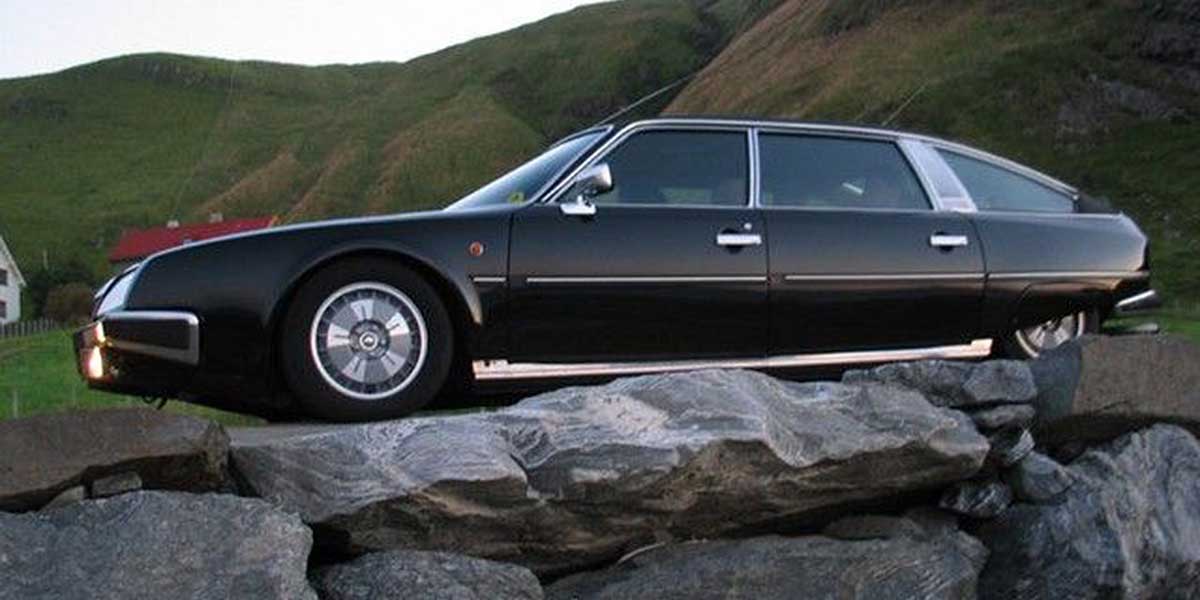

The company was founded by Frenchman Alexandre Darracq as Societa
Anonima Italiana Darracq (SAID), to produce and sell special Darracq
models for Italy. In August 1915, the company came under the direction
of Neapolitan entrepreneur Nicola Romeo, who converted the factory to
produce military hardware for the Italian and Allied war efforts. In
1920, the name of the company was changed to Alfa Romeo with the
Torpedo 20-30 HP the first car to be so badged.
When Alfa (A.L.F.A. for Anonima Lombarda Fabbrica Automobili) Romeo was
founded in 1910, draughtsman Romano Cattaneo came up with the
company’s logo based on a crest he saw in Milan above the door of
Castello Sforzesco. Being that the company was founded in Milan, a
symbol representative of the city seemed appropriate. Designer Giuseppe
Merosi helped turn the idea into Alfa Romeo's official emblem. Apart
from some minor tweaks with the wording, gold trim, and wreath
appearance over the years, the design has remained fairly consistent.
The left side of the emblem is a red cross over a white background - a
medieval Christian symbol. During the Crusades, Milanese soldiers
associated with Giovanni of Rho donned a red cross and white
undergarments beneath their armor. Giovanni of Rho is known for leading
an army to the Holy Land and for erecting a cross on the walls of
Jerusalem during the first crusade. This image could be considered the
Cross of St Ambrose or St. George's Cross.
The right side, a giant serpent/dragon gobbling up a red man, is the
symbol of the influential Visconti family of 11th century Milan. The
image is known as a Biscione and has become a symbol for Milan, being
seen many places around the city. The crown is supposedly from when
Viscontis became dukes in the 15th century. Where the symbol itself
comes from and what it means has been a subject of ongoing debate. The
most accepted interpretation today is that the man being devoured is a
Saracen or Moor (a Muslim) which is being defeated during the Christian
Crusades.
the Italian variation of the French and English Julia.
Julia was an ancient Roman imperial name given to females in the house
of a Julius, as in Caesar. Julius derived from the Greek word ioulos,
meaning "downy-bearded." Over time the accepted meaning has come to be
"youthful," since men begin growing beards in their youth. The name has
been used for Alfa Romeo's compact 4-cylinder 4-door saloons.
The use of the name by Alfa Romeo derives from the Church of Saint
Julia, a Roman Catholic place of worship located in the city of Turin,
Italy, where Alfas Romeo cars are manufactured. The church was built in
1862 under the patronage of philanthropist Juliette Colbert de Barolo
and dedicated to Saint Julia of Corsica.
based on the name Giulia, meaning 'youthful'. English
form of the French Juliette, which is a diminutive form of Julie. It is
a name given to Alfa Romeo's small, 2-door family saloons - literally a
smaller version of the Giulia.
literally a diminutive form of the name Alfa Romeo in the way that Giulietta is a diminutive form of Giulia.
Brera is a district of Milan, Italy. The name stems from
Medieval Italian "braida" or "brera", derived from Old Lombardic
"brayda", meaning a land expanse either cleared of trees or naturally
lacking them.
the Alfa Romeo Montreal was introduced as a concept
car in 1967 at Expo 67, held in Montreal, Quebec, Canada. Originally
concept cars were displayed without any model name, but the public took
to calling it The Montreal. The name was retained when it was put into
production.
Italian for "road-going", it is a term often used
by Italian car manufacturers to indicate a street-legal version of a
racing car; indeed the 33 Stradale was derived from the Tipo 33 sports
prototype.
literally means southern Alfa, as it was made in a
purpose-built factory in Naples in Southern Italy. All other Alfa
Romeos have been made in Turin in northern Italy.
a portmanteau of Milano (Milan), where it was designed,
and Torino, (Turin) where it was manufactured. The Alfa Romeo MiTo
(Type 955) is a front-wheel drive, three-door small car introduced in
2008.
Entering production in 2016, the Alfa Romeo Stelvio was named after a national park in northern Italy. One of the highest paved mountain passes in Europe, the Stelvio Pass has been declared one of the best driving roads in Europe by driving publications around the world. The tight ‘S’ curves of the Stelvio Pass pose a challenge for most vehicles.

After leaving automobile company August Horch & Cie, August Horch
founded his own company–August Horch Automobilwerke GmbH–in
1909. It was later renamed "Audi." In 1932, Audi Automobilwerke merged
with three other companies, each with a different focus: DKW
(motorcycles and small cars), Wanderer (midsize cars), Audi (deluxe
midsize cars), and Horch (high-end, luxury vehicles). Together, they
formed Auto Union AG. The company became a Volkswagen subsidiary by
1966, and in 1985, Auto Union AG became a single company: Audi.
The company’s name comes from the last name of founder August
Horch. In German, Horch means "listen/hear." In Latin, "listen" is
"Audi." The idea was supposedly suggested by of of the company’s
founder’s sons. The company’s slogan is Vorsprung durch
Technik , "Advancement through Technology." Audi’s first logo,
when it was founded in 1909, was an upside-down triangle with a #1 on
top of it, obviously drawing attention to the company’s
self-proclaimed superiority. When the merger occurred in 1932, the Auto
Union emblem was made of four interlocking, overlapping
rings–each containing the logo of a participating brand.
Eventually, the individual company logos and the superimposed company
name disappeared, leaving four sharp, silver circles.
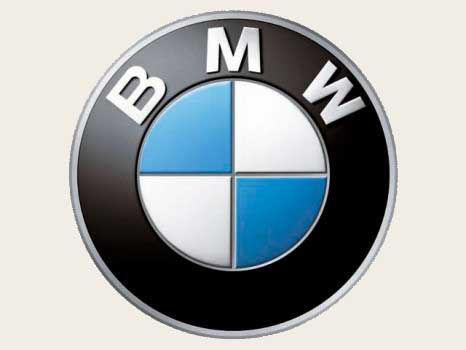
There are conflicting stories relating to what the BMW logo represents.
The most popular idea is that it is a rotating air screw, based on the
cover of a BMW aircraft engine manual from 1929. However, it made its
first appearance on the Bayern-Flugmotor manual in 1918, and the first
time on the road in 1923 on the R32 bike.
According to Dr. Florian Triebel, Executive Board Member of BMW AG,
"There are two traditions concerning the significance of the BMW logo
and trademark, offering two different interpretations of its sky blue
and white fields. One interpretation points to a rotating aircraft
propeller (BMW manufactured aircraft before automobiles). The white and
blue checker boxes are supposed to be a stylized representation of a
white/silver propeller blade spinning against a clear blue sky. The
other relates the BMW logo to Bavaria as the place where the products
are manufactured".
For BMW, it was ‘a happy coincidence’ that the BMW logo
symbolized the Bavarian flag colors and represented the company’s
origin. When the BMW logo was first created, it was prohibited by the
Trademark Act to feature ‘national coats of arms or other symbols
of national sovereignty’ in a trademark. This led the BMW
marketers to come up with a solution of ‘incorrectly configuring
the color elements in the BMW logo from a heraldic perspective’,
while also keeping its relationship with Bavaria evident.
The name BMW is short for Bayerische Motoren Werke AG, translated in
English as Bavarian Motor Works. The name has more of a ring to it in
Germany than it has in English speaking countries - the letter 'W' is
pronounced 'Vee' in German, resulting in the first and third letters of
the name rhyming - the name is pronounced "Bee - Em - Vee".
A smaller two door model available as either a coupe or convertible
A compact four door model available as a sedan, sports wagon or Gran Turismo
A compact coupe-style model available as either a two-door coupe or convertible, or a four-door Gran Coupe
A mid-size four door model available as a sedan or Gran Turismo
A mid-size two door model available as a two-door coupe or convertible, or a four-door Gran Coupe or ALPINA Gran Coupe
a full-size four door model available as a sedan or ALPINA sedan
a line of SUVs and crossovers (or what BMW refers to as Sports Activity Vehicles and Sports Activity Coupes)
used to represent sports coupe, but now Clubsport or Competition Sport.
"Coupé Sport Leichtbau" ("Coupé Sport Lightweight").
a 3.0 Club Sport model powered by a direct-injection petrol engine of new generation instead of the carbureted unit on the CS.
A two door roadster
A high-performance version of many BMW models is
grouped into the M Models (e.g. the M3 is a high-performance version of
the 3 Series sedan).
BMW’s line of electric and plug-in hybrid vehicles
E9 is a range of coupés produced from 1968 to
1975. Initially released as the 2800 CS model, the E9 was based on
the BMW 2000 C / 2000 CS four-cylinder coupés, which were
enlarged to fit the BMW M30 six-cylinder engine. The E9 bodywork was
built by Karmann.
A Gran Coupe is a four door version of a coupe. It
retains the curves and styling of a smaller two door vehicle with the
added roominess of a four door. Both the 4 Series and 6 Series are
available as Gran Coupes.
bA Gran Turismo is a four door sedan with a higher
driving position and a wagon-like trunk. This higher roofline car is
available in the 3 and 5 series.
Initially manufactured by the Italian firm Iso Sp,A beginning in 1953, the name Isetta is the Italian diminutive form of Iso, meaning "little Iso". Iso was initially named 'Isothermos' and manufactured refrigeration units before World War II. The company was founded in Genoa in 1939, but was transferred to Bresso in 1942 by Renzo Rivolta, an engineer and Iso's owner. Rivolta wanted to concentrate on his new Iso Rivolta sports car, and so began doing licensing deals. BMW began talking with Rivolta in mid-1954 and bought not just a license but the complete Isetta body tooling as well. In 1955, the BMW Isetta became the world's first mass-production car to achieve a fuel consumption of 3 L/100 km (94 mpg). It was the top-selling single-cylinder car in the world, with 161,728 units sold.
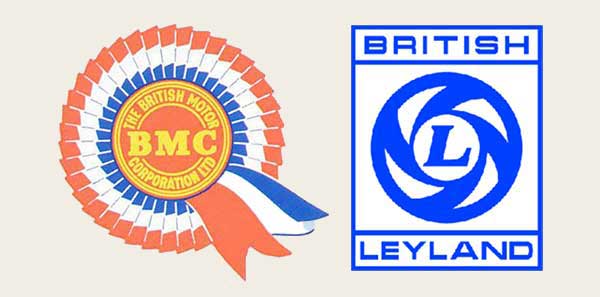
British Leyland was an automotive engineering and manufacturing
conglomerate formed in the United Kingdom in 1968 as British Leyland
Motor Corporation Ltd (BLMC), following the merger of Leyland Motors
and British Motor Holdings. In 1975, it became known as British
Leyland, and later BL. After much restructuring and divestment of
subsidiary companies, it was renamed as the Rover Group in 1986, later
becoming a subsidiary of British Aerospace and subsequently, BMW.
As BMC, the brand range consisted initially of Austin, Morris,
Wolseley, Rily and MG. Triumph, Rover Land Rover and Jaguar were
progressively added. Jaguar and Mini are the only makes/models still
being produced.
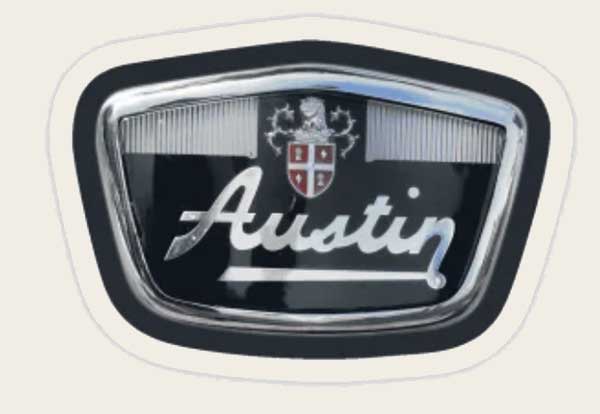
The Austin Motor Company Limited was a British
manufacturer of motor vehicles, founded in 1905 by Herbert Austin. In
1952 it was merged with Morris Motors Limited in the new holding
company British Motor Corporation (BMC) Limited, keeping its separate
identity. The marque Austin was used until 1987. The trademark is
currently owned by the Chinese firm SAIC Motor, after being transferred
from bankrupt subsidiary Nanjing Automotive which had acquired it with
MG Rover Group in July 2005.
Austin used both names and model numbers to identify their models.
These commenced with the letter 'A' followed by a number, in multiples
of fives, starting with A30 (the smallest car) and finishing with A65
(the largest car). Under BMC, model names were predominantly the names
of English counties, eg. Oxford, Cambridge, Devon, Somerset. BL models
were named by engine size, eg. 850, 1100, 1500, 1800.

Morris Motors Limited was formed in 1919 to
take over the assets of William Morris's WRM Motors Limited and
continue production of the same vehicles. In 1952, Morris merged with
the other brands to form BMC, the name remained in use until 1984, when
British Leyland's Austin Rover Group decided to concentrate on the more
popular Austin brand.
Minor, Major and Oxford were the mainline models. From the early 1960s,
cars branded as Morris were re-badged versions of cars common to the
BMC/BL stable. The Minor name was given to the Mini upon its release,
but eventually was dropped as the Mini gained its own reputation. The
Oxford name was retained and used for the mid-sized Morris. The small
4-door Austin Lancer was rebadged as the Morris Major (both named after
military rankings).

Wolseley Motors Limited was founded in early
1901 by the Vickers armaments combine in conjunction with Herbert
Austin. It initially made a full range, topped by large luxury cars,
and dominated the market in the Edwardian era. In 1927 when it was
bought from Vickers Limited by William Morris as a personal investment
He moved it into his Morris Motors empire just before the Second World
War. Under BMC, all Wolseley's were essentially re-badged versions of
Austin-Morris vehicles with a few external and mechanical changes to
set them apart. Models numbers were based on engine size and horse
power, eg. the 16/60 model had a 1.6 lite engine that developed approx.
60 horsepower.
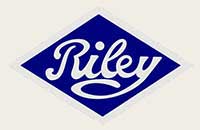
In 186 William Riley Jr. purchased a cycle
business and in 1896 created The Riley Cycle Company Limited. Riley's
middle son, Percy, followed in his father's footsteps, building his
first car at 16. In 1938, after going bankrupt, Lord Nuffield bought
Riley, whereupon the Coventry works were made an extension of Morris
Motors' engine branch. There was no pattern to naming the Riley version
of BMC's cars - some followed the number system adopted by Woseley,
other had their own names, such as the Riley Elf (a Mini with a boot
added, Wolseley's Mini was called the Hornet) and the Kestral
(Austin/Morris 1100).
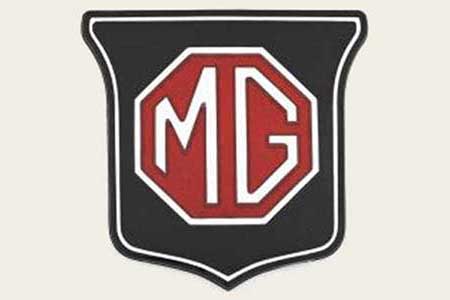
MG cars had their roots in a 1920s sales promotion
sideline of Morris Garages, a retail sales and service centre in Oxford
belonging to William Morris. The business's manager, Cecil Kimber,
modified standard production Morris Oxfords and the new marque as born.
Originally, the marque was used predominantly for two-seater sports
cars made at the M.G Car Company factory in Abingdon, some 16 km south
of Oxford. MG also produced saloons and coupes, with engines up to
three litres in size.The later saloons were re-badged and/or
re-engineered version of the BMC/BL stable cars.
In July 2005, the Nanjing Automobile Group purchased the rights to the
MG brand along with other assets of the MG Rover Group, creating a new
company which still manufactures cars using the MG name and logo..
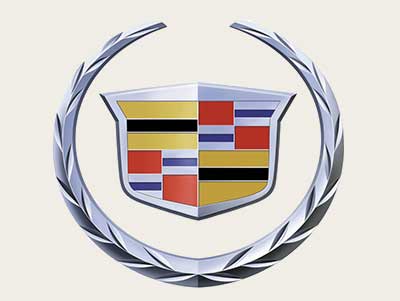
Since the company’s establishment by Henry Martyn Leland in 1902
and acquisition by General Motors in 1909, certain design elements have
remained consistent in the company’s emblem. The Cadillac name
and its emblem has its origins in the family crest of Antoine de la
Mothe Cadillac, the founder of the city of Detroit. The man asserted
that the lineage was tied to old French royalty, thus meaning the
Cadillac coat of arms was designed ceturies before America was
discovered, but many believe Antoine designed the crest himself when he
married in 1687, taking its looks from his neighbor Baron Sylvester of
Esparbes de Lussan. In reality, it’s possible Antoine invented
much of his noble ancestry.
The first automotive Cadillac emblem featured the following design elements:
The Couronne (Crown): The six ancient counts of France, with the pearls being descendancy from the royal counts of Tolouse.
The Merlettes: Commonly known as "the ducks," these birds appear in
trios to symbolize the Holy Trinity, with three on one side
representing the nobility of the mother’s lineage and the others
representing the father’s noble lineage. The use of the birds
comes from the time of the Crusades.
Color Stripes: Black (superiority), gold (riches), red (boldness),
silver (virtue), and blue (valor). The black stripe itself is
indicative of an award for Crusader service. The Laurel Wreath: A
symbol of aristocracy and victory.
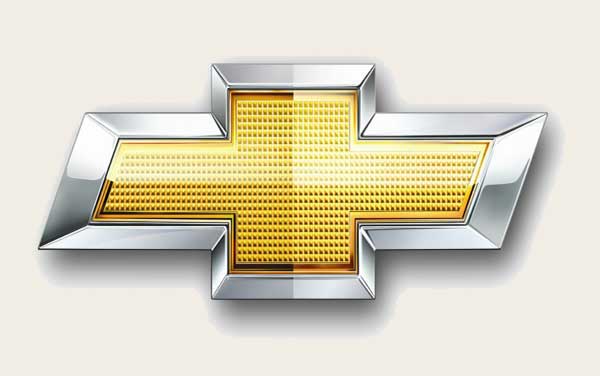
Race car driver Louis Chevrolet and ousted General Motors founder
William C. Durant started the company on November 3, 1911 as the
Chevrolet Motor Car Company. Durant used the Chevrolet Motor Car
Company to acquire a controlling stake in General Motors with a reverse
merger occurring on May 2, 1918 and propelled himself back to the GM
presidency.
Chevrolet's iconic Chevy 'bowtie' logo was first introduced by the
company’s co-founder William Durant in 1913. Over the years,
multiple explanations of where Durant came up with the idea for the
logo have circulated. The most predominantly accepted – and the
explanation confirmed by Durant and the Chevy company – origin is
that it was inspired by the wallpaper design within a Paris hotel. It
is said he tore off a piece of the wallpaper and kept it to show
friends, with the thought that it would make a good nameplate for a
car."
However, Durant’s own family disagrees with that explanation.
According to his daughter, Durant sketched the image at the dinner
table in 1929, as he was known to doodle designs frequently. A third
explanation which his wife offered was that Durant copied the design of
an ad. for "Coalettes" in a Virginia newspaper ad while they were on
vacation in 1912. This explanation does seem to withstand scrutiny, as
the ad for "Coalettes" features a logo nearly identical to
Chevrolet’s bowtie. That it shape reflects the red cross on the
flag of Switzerland (Louis Chevrolet was a Swiss-American) may have
been an incluencing factor.
the name Corvette rolled off the tongue well and it
was thought a tie to the fast strike ships called "Corvettes" from
World War II would appeal to the American men, many who had served.
This would go on to form the foundation for the nautical names that
would be applied to Corvettes and concepts such as the Mako Shark and
Sting Ray (later to be used as Stingray).
designed as a rear-engined air-cooled sports sedan, it
was given a name that incorporated the two main aspects of the
car’s personality – "Corv" was came from the name of
Chevrolet’s only sports car – the Corvette – "Air"
was a reference to it having an air-cooled engine.
Chevrolet executives Bob. Lund and Ed Rollett found the
word camaro in the French-English dictionary was slang, to mean friend,
pal, or comrade. The article further repeated Estes's statement of what
the word camaro was meant to imply, that the car's name "suggests the
comradeship of good friends, as a personal car should be to its owner".
In fact, the actual French word that has that meaning is "camarade,"
from which the English word "comrade" is derived, and not "camaro";
"camaro" is not a recognized word in the French language.
The meaning of the name Chevelle is My God is a vow.
Chevelle is a Hebrew girl’s name. Chevy chevelles were made from
1964-1973 but the most famed years were 69 and 70. They were a
sub-model of the malibu but much better. According to an urban
dictionary,Chevelle is a strong kick ass kinda girl who rules everyone
and everything around and about her! Easy to get along with. But don't
cross her or you will pay for it.
The Impala name was first used for the full-sized 1956
General Motors Motorama show car that bore Corvette-like design cues,
especially the grille. It was named Impala after the graceful African
antelope, and this animal became the car's logo. The Impala was
Chevrolet's popular flagship passenger car and was amongst the better
selling American made automobiles in the United States.
Bel Air is a high class neighborhood on the Westside
of Los Angeles, California, in the foothills of the Santa Monica
Mountains. Together with Beverly Hills and Holmby Hills, Bel Air forms
the Platinum Triangle of Los Angeles neighborhoods. With the 1953 model
year the Bel Air name was changed from a designation for a unique body
shape to a premium level of trim applied across a number of body
styles. The Bel Air continued with various other trim level
designations until US. Production ceased in 1975. Production continued
in Canada, for its home market only, through the 1981 model year.
named after Biscayne Bay, near Miami, Florida,
following a trend by Chevrolet at the time to name cars after coastal
cities or beaches such as the Bel Air, Leguna, Brookwood, Delray and
the Chevrolet Malibu.

Back when Chrysler began in the 1920s, Walter P. Chrysler’s team
of 18 men included Oliver Clark. Clark was the genius who designed not
only the brand’s iconic silver-winged radiator cap (based on the
Greek god Mercury) but the original Chrysler logo too. From the mid
1920s to the mid 1950s, Chrysler models proudly paraded the
brand’s first emblem: a "seal of approval." The logo consisted of
a wax seal with a ribbon showing from the lower right. The lightning
bolts are actually Z’s, honoring the early Zeder prototype named
for chief engineer Fred Zeder.
Clark said the seal was patterned from state fair ribbons, synonymous
with quality. The wax seal was retired in 1954. From 1955 to the 1980s,
Chrysler didn’t have a consistent badge on its vehicles. One
common design, though, was a coat of arms. Other recurring elements
included lions and crowns.
Chrysler’s Pentastar logo, created by the Lippincott &
Marguiles design firm in the early 1960s, was selected from among over
800 other designs. According to its creator Robert Stanley, he wanted
"something simple, a classic, dynamic but stable shape for a mark that
would lend itself to a highly designed, styled product - We wanted
something people could look at and say, ‘This was not done
freehand.'"
The five-point star within a pentagon was used for Chrysler’s
corporate identity to visually present the company to the public. It
first appeared in company documents and advertisements before being
subtly emblazoned on the passenger-side fender of Chrysler models to
subconsciously attract attention. By 1981, all Chrysler divisions used
the Pentastar exclusively – before it began being phased out in
the 1990s to differentiate brand identities.
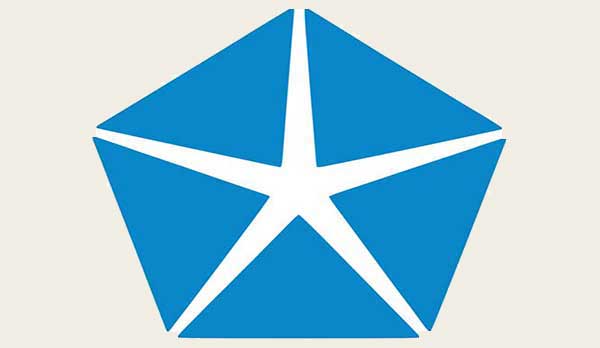
Chrysler Valiant is the name under which Chrysler marketed its cars in
Australia between 1962 and 1981. Initially a rebadged locally assembled
Plymouth Valiant from the United States (RV1 (R Series and RV2 (S
Series), from the second generation launched in 1963, the Valiant was
fully manufactured in Australia.
The fully Australian manufactured models, commencing with the AP5, were
sold as the "Valiant by Chrysler" rather than as the Chrysler Valiant.
Standard cars were simply named Valiant, the deluxe verions where
called Valiant, and the station was was the Valiant Safari. Local
production ended in 1981 following the takeover of operations by
Mitsubishi Motors Australia.
the high performance variant of the 4-door Valiant.
Added later was a two-door Valiant Hardtop and Pacer Hardtop -
essentially, a North American Dodge Dart coupe with the Australian
Valiant front sheetmetal and interior trim.
took its name from its US counterpart, the
Dodge Charger. Both were built on Chrysler's B platform, but the
Australian Charger was a completely different vehicle designed and
built wholly in Australia. A two door hardtop coupe introduced in 1971,
it was a short wheelbase version of the concurrent Chrysler Valiant
sedan.
the name is said to mean "centre of the universe" or
"centre of my world". This midsize car produced by Chrysler Australia
between 1975 and 1978, was based on Chrysler Europe's Simca 180. The
Centura had limited market success in Australia.
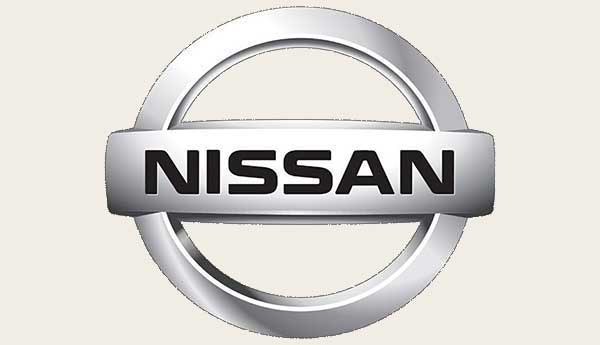
In 1931, Dat Motorcar Co. chose to name its new small car "Datson", a
name which indicated the new car's smaller size when compared to the
DAT's larger vehicle already in production. When Nissan took control of
DAT in 1934, the name "Datson" was changed to "Datsun", because "son"
also means "loss" in Japanese, and also to honour the sun depicted in
the national flag – thus the name Datsun. The new car's name was
an acronym of the surnames of the following company partners: Kenjirō
Den, Rokurō Aoyama and Meitarō Takeuchi. By 1986 Nissan had phased out
the Datsun name, but re-launched it in June 2013.
Not only is the Nissan name an abbreviation for the original company,
it's also a combination of Japanese characters "ni" ("sun") and "ssan"
("product" or "birth"). Thus, Nissan is a product of Japan, the land of
the rising sun. The Datusun/Nissan original logo was a combination of
two simple geometric shapes: a blue rectangle over a red circle, with
the company name inscribed on the rectangle. The red circle is
speculated to pay homage to the Japanese flag. In the early 1990s, this
colorful logo was replaced with a chrome outline of the shapes. The
silver color represents modernism and sophistication.
a celestial object, thought to be a rapidly rotating neutron star, that emits regular pulses of radio waves and other electromagnetic radiation at rates of up to one thousand pulses per second.
an Italian word for ‘standing or stopping place’ or even ‘room’, however our usage has always meant a group of (usually rhymed) verse lines, or what is often (wrongly) referred to as a ‘verse’ of a poem. Somewhat larger than the Bluebird with styling that recalled the popular Datsun 1600, the car was marketed in Australia as the Datsun Stanza, as the Nissan Violet in Japan, and the Datsun 510 in Canada and the United States. The Australian variant was manufactured in Nissan's Clayton plant in Melbourne, Victoria.
named after the hit Broadway musical "My
Fair Lady." It was considered a strange name to the rest of the world,
but in Japan, it seemed logical to name their new car after the latest
winner of the Best Motion Picture Academy Award.
The Skyline name originated from Prince automobile company, which developed and sold the Skyline range of sedans before merging with Nissan-Datsun in 1966. The original Skyline was launched by the Prince Motor Company in April 1957 and was powered by a 1.5-litre engine. The later iteration launched in 1964 called the Prince Skyline GT was powered by a 2.0-litre G7 inline-6 engine shared with the up market Prince Gloria sedan.
Gloria is the anglicized form of the Latin feminine given name gloriae, meaning immortal glory; glory, fame, renown, praise, honor. The Gloria is a large luxury car made from 1959 by the Prince Motor Company, and later by Nissan Motors since its merger with the former - hence being originally marketed as Prince Gloria and later as Nissan Gloria. The Gloria got its name as a tribute when the first series BLSI sedan was presented to the then Crown Prince Akihito, the future Emperor of Japan, and Princess Michiko as an anniversary gift after one year of marriage.
The Cedric name was inspired by the main character, Cedric, in Frances Hodgson Burnett's novel Little Lord Fauntleroy by the Nissan CEO at the time Katsuji Kawamata. The Cedric replaced the Austin A50 Nissan was building under license from Austin Motor Company of England, which was called the Nissan Austin. First produced in 1960, the Nissan Cedric was developed to provide upscale transportation, competing with the Prince Skyline and Gloria which were later merged into the Nissan family. Throughout the many versions of the Cedric, it was always considered to be the prime competitor to the Toyota Crown. The bonnet ornament was inspired by the diamond pattern used by Lincoln but was changed to two right angles set next to each other. In Australia, as with other export markets, commencing with the 4th generation Cedric (from 1975), the model was marketed as the 200C, 220C, 260C, 280C and 300C (until 1985).
Although Nissan's own materials indicate that the Bluebird name emerged in 1959, some records show that the name first adorned a 988 cc (60.3 cu in), 34 PS (25 kW) four-door sedan in 1957, which was part of the company's 110/210 series. Its engine was based on an Austin design, as Nissan had been building the Austin A50 Cambridge under licence in the 1950s. In September 1963, Nissan brought the Bluebird up-to-date with boxier styling (by Pininfarina), resembling European designs, particularly the Lancia Fulvia. The banana-profiled 410 was built from 1964 to 1967. From 1981 to 1985, Australia followed the Japanese convention by calling its 180B replacement the Bluebird, and had a unique, facelifted rear-wheel-drive version for 1984 and 1985. That car was replaced in 1986 by the Nissan Pintara.
The 4-door Nissan Pintara was manufactured by Nissan Australia from 1986 until 1992. Replacing the locally produced Nissan Bluebird (910), and was based on the Nissan Skyline, the first generation model was built by Nissan Australia at its Clayton, Victoria assembly plant in Melbourne from mid-1986. Under the Button car plan, in which local manufacturers shared models, Ford Australia marketed a rebadged version of the U12 Pintara sedan and hatchback as the Ford Corsair. In addition, Ford provided the tooling and stamped the car's body panels. The U12 model was discontinued in mid-1992 when Nissan Australia ended local production and New Zealand reverted to local assembly of the next generation Bluebird from Japanese kits.
The "Silvia" name is a variation of the word "sylvia", which is a scientific genus term assigned to a class of birds, possibly a reference to the Bluebird which was in production at the time the Silvia was introduced. Silvia is the name given to the company's long-running line of sport coupes based on the Nissan S platform. The Silvia name made its public debut at the Tokyo Motor Show in September 1964 as the "Datsun Coupe 1500". The introductory model was a hand-built coupe (CSP311) based on the Fairlady convertible, styled with input from German Count Albrecht Goertz, who also had a hand in designing Studebakers, the classic BMW 507 and Porsche 911. Most of the vehicles remained in Japan; however, 49 examples were exported to Australia and another 10 went to other countries under the name Datsun Silvia.
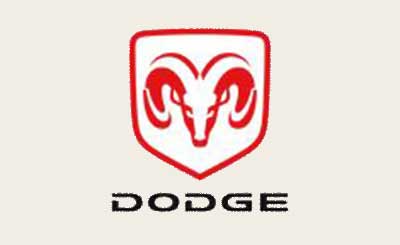
Founded as the Dodge Brothers Company machine shop by brothers Horace
Elgin Dodge and John Francis Dodge in the early 1900s, Dodge was
originally a supplier of parts and assemblies for Detroit-based
automakers and began building complete automobiles under the "Dodge
Brothers" brand in 1914.
borrowed its name from the Dodge Dart Phoenix,
but unlike its American namesake it was offered only as a four-door
sedan and only with a 318 cubic inch V8 engine. The Phoenix was
introduced in May 1960 and positioned above the locally developed
Chrysler Royal as Chrysler Australia’s luxury model. Initially a
Canadian Dodge Dart with a Plymouth RH drive dashboard, it was imported
in CKD packs and assembled at Chrysler Australia's Mile End (Adelaide)
facility.
The SD2 of 1962 featured a shorter wheelbase and a completely new body
which was both shorter and narrower than its predecessor, being now
based on the downsized US Dodge Dart 440. The 1965 and later Phoenixes
were basically the Canadian Plymouth Fury III but featuring the North
American Dodge Polara RH drive dashboard. Production was transferred to
Port Melbourne in 1970. A decision to close the outdated facility led
to the discontinuation of the Phoenix in 1972.
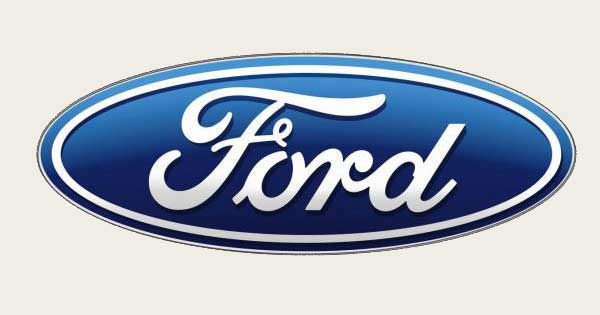
The script of the brand name on Ford's logo/emblem is often believed to
have been Henry Ford’s handwriting, but this is not so. It was
created by the company’s first chief engineer/designer Childe
Harold Wills. Ford was looking for a logo for his vehicles, so Wills, a
friend of Ford’s who designed and printed business cards, used
the calligraphy from his own cards to stylize the letters.
in the late 1990s the Ford Motor Company decided it would abandon some
of the best-known car names in an effort to streamline its cars with
"F" names. The first to go was Escort, which was dropped in favor of
the Ford Focus.
The Ford Popular, often called the Ford Pop, is a
car from Ford UK that was built in England between 1953 and 1962. When
launched, it was Britain's lowest priced car. The name is believed to
have been coined as it was marketed as a car that everyone could
afford.
The Ford Anglia is a compact car. At the time of
its introduction, the A494A Tourer was the cheapest new car on the
Australian market. The Anglia name was applied to various models
between 1939 and 1967. It was replaced by the Ford Escort. The reason
for the name's selection is not known. Anglia is the medieval Latin
name for England, and more recetly for the eastern part of England,
including East Anglia, Mid Anglia and West Anglia.
the name is a word meaning a chief officer,
magistrate, or regional governor in certain countries. The Ford Prefect
is a line of British cars which was produced by Ford UK between 1938
and 1961 as a more upmarket version of the Ford Popular and Ford Anglia
models.
The name is a word meaning an official appointed by a
state to live in a foreign city and protect the state's citizens and
interests there. A compact 4-cylinder saloon, the Ford Consul was
manufactured by Ford UK from 1951 to 1962. The name was later revived
for a model produced by Ford in both Britain and Germany from 1972 to
1975.
the name means a privateer or pirate, especially one
operating along the southern shore of the Mediterranean in the
16th–18th centuries.
In the 1960s and 70s, Ford UK used the names of
popular resorts for its new models. Cortina an alpine town in Northern
Italy. It is a winter sport resort known for its skiing trails,
scenery, accommodation, shops and après-ski scene, and for its
jet set and Italian aristocratic crowd. The Ford Cortina was built by
Ford of Britain in various guises from 1962 to 1983, and was the United
Kingdom's best-selling car of the 1970s. The car's project development
name was "Archbishop".
The name recalls the Italian holiday island of Capri
in the Tyrrhenian Sea off the Sorrento Peninsula. The car was named
Colt during its development stage, but Ford was unable to use the name,
as it was trademarked by Mitsubishi. The Ford Capri is a fastback coupe
built by Ford Motor Company between 1968 and 1986, designed by American
Philip T. Clark, who was also involved in the design of the Ford
Mustang. It was intended to be an European equivalent of the Ford
Mustang.
the name recalls an island state in the Caribbean,
in the Windward Islands: formerly a British colony. The Ford Granada is
a large executive car manufactured by Ford Europe in Cologne, Germany,
and Dagenham, UK, from 1972 until 1994.
the name means a soft and gentle breeze, from the
Greek zephyros - the west wind. A mid-sized 4 door saloon, the Ford
Zephyr was manufactured by Ford of Britain from 1950 to 1972
the name of a a belt of the heavens, including all
apparent positions of the sun, moon, and most familiar planets. It is
divided into twelve equal divisions or signs (Aries, Taurus, Gemini,
Cancer, Leo, Virgo, Libra, Scorpio, Sagittarius, Capricorn, Aquarius,
Pisces). The the Ford Zodiac and Ford Executive were luxury variants of
the Ford Zephyr. They were the largest passenger cars in the British
Ford range from 1950 until their replacement by the Consul and Granada
models in 1972.
The Ford Escort is a small family car which was manufactured by Ford of Europe from 1968 until 2000. The Ford Escort name was also applied to several small car types produced in North America by Ford between 1981 and 2000. In 2014, Ford revived the Escort name for a car based on the second-generation Ford Focus sold on the Chinese market. Unlike the first Escort (which was developed by Ford of Britain), the second generation was developed jointly between the UK and Ford of Germany. Codenamed "Brenda" during its development, it used the same mechanical components, floorpan and core structure as the Mark I.
In 1998, Ford announced an all-new car, the Focus, which replaced the Escort and superseded the "Escort" name that had been in use for 30 years. All engines except the 1.6 L petrol and 1.8 L turbo diesel were dropped, as were the three-door hatchback, four-door saloon and cabriolet bodystyles (except in mainland Europe, New Zealand, South Africa and South America).
The Ford Laser is a compact car, originally a subcompact car in the first three generations, which was sold by Ford in Asia, Oceania, and parts of South America, and Africa. It has generally been available as a sedan or hatchback, although convertible, wagon and pick-up versions have also been available in different markets. The sedan, and briefly station wagon, versions were badged Ford Meteor in Australia between 1981 and 1987. The Ford Meteor name was also used in South Africa. The Ford Laser was a restyled version of the Familia/323 models produced by Mazda in Japan from 1980 onwards. Ford had acquired a 25% stake in Mazda in 1979. Platform and assembly-line sharing with the locally produced Mazda Familia in Japan allowed the Laser in that market to be offered with a plethora of engine, paint and trim configurations not available anywhere else in the world.
The Ford Sierra is a mid-size car or large family car that was built by Ford Europe from 1982 to 1993. It was designed by Uwe Bahnsen, Robert Lutz and Patrick le Quément. The code used during development was "Project Toni". Its name came from the Spanish word for mountain range. It was mainly manufactured in Germany, Belgium, and the United Kingdom, although Sierras were also assembled in Ireland, Argentina, Venezuela, South Africa and New Zealand.
The Ford Fairmont was an upmarket model of the Ford
Falcon from 1965 to 2008. It featured a higher level of standard
equipment than corresponding Falcon models of the same series. The surname Fairmont was first found in Lancashire where they held a family seat as Lords of the Manor. The Saxon influence of English history diminished after the Battle of Hastings in 1066, however this Saxon surname survived and was first referenced in the 12th century (1169) when Faremann held estates there.
The name is derived from Henry Ford's estate, Fair
Lane, near Dearborn, Michigan. The Ford Fairlane was sold between 1955
and 1970 by Ford in North America initially as a full-sized car, but
became a mid-sized car from the 1962 model year. In Australia, the
Fairlane was a larger, more luxurious version of the Falcon.
The Ford Galaxie is a full-sized car that was
built in the United States by Ford for model years 1959 through to
1974. The name was used for the top models in Ford's full-size range
from 1958 until 1961, in a marketing attempt to appeal to the
excitement surrounding the Space Race.
Edsel Ford first used the term "Falcon" for a more
luxurious Ford he designed in 1935, the connection to the bird of that
name being that it is high flying. He decided the new car did not fit
with Ford's other offerings, so this design eventually became the
Mercury. The Falcon name then reappeared in 1955 as a Chrysler concept
vehicle, which was built with the intention of going head to head with
the Ford Thunderbird (hence the similar name) and Chevrolet’s
Corvette. In 1958, both Chrysler and Ford had internally named their
new small car the ‘Falcon’. In the auto industry all names
need to be registered with the Automotive Manufacturers Association,
and in a case of true coincidence Ford managed to register their
‘Falcon’ a matter of only 20 minutes ahead Chrysler,
ensuring the name was Ford’s. Chrysler was left to search for a
new name - and settled in Valiant.
The Australian Ford Falcon is a full-sized car that was manufactured by
Ford Australia from 1960 to 2016. Initially based on the Canadian Ford
Falcon, it was progressively re-engineered locally for the harsher
Australian conditions. In the US and Canada, the Ford Falcon is a
front-engine, rear-drive six passenger compact car produced by Ford
from 1959 to 1970, across three generations. It was created to compete
agains smaller European cars such as Fiats, Renaults, Toyotas, and
Volkswagens in the Americas.

In 1852, James Alexander Holden emigrated to South Australia from
Walsall, England, and in 1856 established J.A. Holden & Co., a
saddlery business in Adelaide. In 1908, the business - then Holden
& Frost Ltd - moved into the automotive field under the name
Holden's Motor Body Builders Ltd, even building the Ford Model T for a
period. It became a subsidiary of the United States-based General
Motors (GM) in 1931, when the company was renamed General
Motors-Holden's Ltd. It was renamed Holden Ltd in 1998, adopting the
name GM Holden Ltd in 2005.
During the production run of Holden's first model from 1948, it was
always officially known as the 48-215, the "48" representing the first
year production, and the "215" being the size of its motor (2.15
litres).
Though GMH never officially used the FX and FJ model identification
code ("FX" was a parts list number for a front crossmember modification
- F for front, and X for crossmember - the origins of "FJ" is not
known) they acknowledged the principle of it when they named the FE in
1956. Though I have never seen an official explanation as to the
meaning of the code, it has been said that the letter "F" came to
represent the fact that vehicles starting with that code were
introduced in the 1950s, which explains why, when working backwards,
the first three models introduced in the 1960s started with the letter
"E", and why the body shape introduced with the FE in 1956 did not
retain the "F" prefix for the whole of its production life, but changed
to "E" in the new decade.
The pattern of counting backwards to identify the decade and year
production commenced does seem to work up until the mid 1960s, with the
FE (1956), the FC (1958), the FB (1959 - went on sale in January 1960),
and then the EK (1961) and EJ (1962). Having been introduced in 1963,
one would expect the EH model to have been called the EI, but perhaps a
little was jumped because EJ rolls off the tongue better than EI.
After that, the next nine models have an "H" prefix, though production
started in the middle of a decade and ended in the next. It is believed
this letter refers to the international General Motors platform that
underpins it, in this case it was "H" for Holden. Later cars in the
Commodore series had the prefix V, a reference to these vehicle having
been built on the "V" platform. The "T" and "M" code for the Gemini and
Barina models refer to the platforms that underpin them. The second
letter of the model code seems to follow no set pattern, though there
probably was a reason for each model's specific designation.
a region in the Snowy Mountains, NSW. It is an Australian Aboriginal name meaning breast.
The Holden Gemini is a compact car that was produced
by Holden and sold in Australasia from 1975 to 1986. It was based on
the Japanese Isuzu Gemini, one of the many models based on the GM T-car
platform, and it is from that car that the Holden counterpart took its
name. The first Gemini was the Bellett Gemini, first seen in November
1974.
an Australian Aboriginal word meaning 'to fly'.
Introduced in May 1967 to replace the HA series Vauxhall Viva in the
Australian market, the first Torana model was a mildly facelifted HB
series Vauxhall Viva. The 3rd generation Torana - the LH - introduced
in March 1974, was the Australian variation of other GM products of the
time sharing its overall size and profile, notably the Opel Ascona and
the FE series Vauxhall Victor. In November 1976 the four-cylinder
Torana was revised and relaunched as the Holden LX Sunbird.
a female name of Australian Aboriginal origin, meaning 'of the wind'.
a work of sportive fancy in art.
The Sydney suburb of Kingswood is named after
Kingswood, an urban area in South Gloucestershire, England, on the
eastern border of the City of Bristol. Sydney's Kingswood is a typical
western Sydney working class suburb, and it is believed its name was
given to the new 1968 model Holden to infer it was a tough, reliable
and down to earth Australian working man's car.
A Commodore is a senior naval rank used in many
navies which is equivalent to Brigadier and Air Commodore that is
superior to a navy captain, but below a rear admiral. The name was
first used by GM's European division, Opel, for its up-market placement
for its Rekord. The name was chosen for the replacement of Holden's
Kingswood because, at a time, General Motors used the term "the General
leads the field", in its advertising, infering it held the top ranking
position in its field, just as a General is the highest Army ranking.
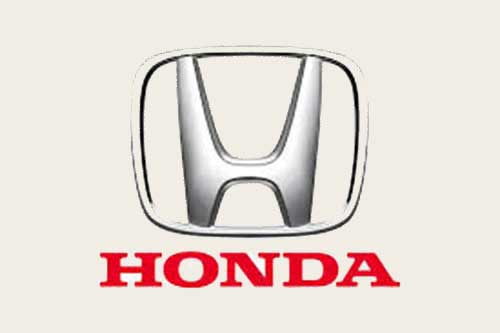
The Honda Motor Company gets its name from its founder, Soichiro Honda,
whose name means "one from the base of the fields" in Japanese. He
started working as a mechanic tuning race cars and eventually started a
piston rings company, briefly attending engineering school to obtain a
piston contract with Toyota. After developing an automated production
process that could employ unskilled workers, Soichiro Honda eventually
began building motorbikes and founded an automotive brand in 1948.
When Honda began producing automobiles with the introduction of the
T360 in 1963, a large "H" appeared as the brand’s badge.
It’s remains largely unchanged 50 years after it appeared on the
blue hood of the T360. Honda wanted its logo to reflect
trustworthiness, reliability, and durability - and the wide/thick
lettering reflects that. The "H" is broader at the top and narrower at
the bottom, as if its arms are raised toward the sky - a fitting stance
considering the company’s belief in reaching for one’s
dreams (the official motto being "The Power of Dreams").
harmony, or agreement
introduction to a pice of music
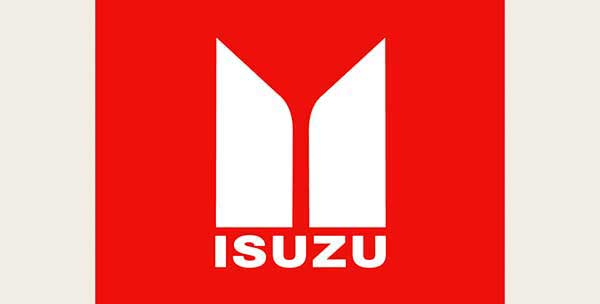
Isuzu Motors Ltd is the world’s largest truck producer,
specializing in commercial vehicles and diesel engines. Its full name
being Isuzu Jidōsha Kabushiki-Kaisha, the company was named after a
river that flows past a Japanese shrine. The name Isuzu translates in
English as "fifty bells." Isuzu began in 1916 when the Tokyo
Ishikawajima Shipbuilding and Engineering company wanted to expand its
production to involve automobiles. By 1922, its first car was built in
partnership with British manufacturer Wolseley Motors. Isuzu Motors Ltd
was formed in 1949.
Designed by Isuzu, the Bellett replaced the Isuzu
Hillman Minx, manufactured by Isuzu under license with the Rootes
Group. It was manufactured between 1963 and 1973. As the word Isuzu
translated into English means "fifty bells." The nameplate "Bellett"
referred to "a smaller bell (Bellel)", the Bellel being a previous,
larger model manufactured by Isuzu.
Gemini is the third astrological sign in the zodiac,
originating from the constellation of Gemini, represented by the twins
Castor and Pollux. After General Motors acquired a stake in Isuzu, the
Bellett was replaced by GM's "global" T-car, initially called Isuzu
Bellett Gemini and later simply Isuzu Gemini. The name was selected as
the car was the twin of the Opel Kadett C, both of which were built on
General Motors' T-car platform.
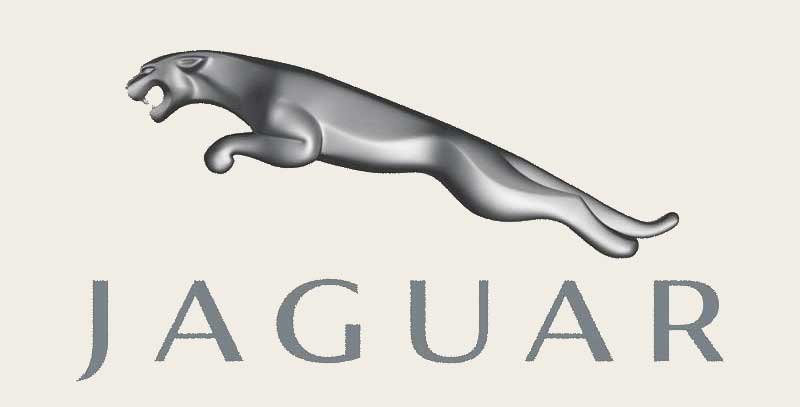
The Jaguar brand actually began as the Swallow Sidecar Company in 1922,
founded by young British entrepreneurs William Walmsley and William
Lyons. It wasn’t until 1935 that the British company added the
"Jaguar" name to its identity when it released the SS Jaguar sedan as a
joint venture with chassis producer Standard Motor Company. Hence, the
"SS" in this case became "Standard-Swallow." Once World War II changed
the connotation of SS in the public’s eye, the company’s
name and logo changed in 1945, dropping the "SS" and references to the
swallow. Going by Jaguar Cars, the automaker introduced the emblem of a
pouncing jaguar, representing the vehicles’ grace, strength, and
speed. The use of silver and black coloring further conveys
sophistication.

Kia, the oldest automaker in Korea, began in June 1944 as a
manufacturer of bicycle components. Chul-Ho Kim, who founded the
company, had a specific name in mind for the company. According to the
automaker, the name "Kia" is a combination of "ki" meaning arise or
come up out of and "A", signifying Asia. Thus, Kia can be defined as
"rising out of Asia." Kia has two logos: the text-based symbol for
international use and another for only South Korea.

Automobili Lamborghini S.p.A. is an Italian brand and manufacturer of luxury sports cars and SUVs based in Sant'Agata Bolognese. The company is owned by the Volkswagen Group through its subsidiary Audi. Ferruccio Lamborghini, an Italian manufacturing magnate, founded Automobili Ferruccio Lamborghini S.p.A. in 1963 to compete with established marques, including Ferrari. The company was noted for using a rear mid-engine, rear-wheel drive layout. Lamborghini grew rapidly during its first decade, but sales plunged in the wake of the 1973 worldwide financial downturn and the oil crisis. The firm's ownership changed three times after 1973; in 1998, Mycom Setdco and V'Power sold Lamborghini to the Volkswagen Group where it was placed under the control of the group's Audi division.
The world of bullfighting is a key part of Lamborghini's identity. In 1962, Ferruccio Lamborghini visited the Seville ranch of Don Eduardo Miura, a renowned breeder of Spanish fighting bulls. Lamborghini, a Taurus himself, was so impressed by the majestic Miura animals that he decided to adopt a raging bull as the emblem for the automaker he would open shortly. After producing two cars with alphanumeric designations, Lamborghini once again turned to the bull breeder for inspiratio when he named the
after their line of bulls.
The automaker would continue to draw upon the bullfighting connection in future years. The
was named for the Miura bull that killed the famed bullfighter Manolete in 1947.
is the Spanish word for sword, sometimes used to refer to the bullfighter himself. The
name carried a special double meaning; though it was intended to refer only to the historic bullfighting region in Spain, Ferruccio was concerned about confusion with the also historic Jarama motor racing track.
broke from the bullfighting tradition, its name being a Piedmontese expletive. Legend has it that stylist Nuccio Bertone uttered the word in surprise when he first saw the Countach prototype, "Project 112". The LM002 (LM for Lamborghini Militaire) sport utility vehicle and the Silhouette (named after the popular racing category of the time) were other exceptions to the tradition.
The Jalpa of 1982 was named for a bull breed;
, for the Duke of Veragua's ferocious bull famous for fighting an epic battle against El Chicorro in Madrid in 1869; Diablo means "devil" in Spanish.
, the legendary bull whose life was spared by El Lagartijo for his performance in 1879; Gallardo, named for one of the five ancestral castes of the Spanish fighting bull breed; and
, the bull that defeated young Mexican torero Félix Guzmán in 1943. The
concept of 2008 was named for the estoc, the sword traditionally used by matadors during bullfights.It's also worth noting that it was reported that Lamborghini was moving away from naming its cars after fighting bulls and that
is Spanish for a hurricane. The last part is true, but Huracan was also the name of a famous bull that fought in 1879.

The Lancia logo was a simple design originally created by Count Carlo
Biscaretti di Ruffia. The logo shows a lance and shield with a flag,
symbolizing honor and strength of its cars throughout the years.
Post war Lancias were named after Roman roads. After the marque was
purchased by Alfa Romeo in the 1970s, the company often used letters of
the Greek alphabet for its model names, following on from its parent
company (Alfa Romeo) use of the first letter of the Greek alphabet for
its name, followed by Beta, Gamma, Delta for its new subsiduary's
models. Exceptions were the Lancia 2000 Berlina and the Stratos.
establishing a post-war Lancia tradition, the car was named after a Roman road: the Via Aurelia, leading from Rome to Pisa.
named after the Via Flaminia, the road leading from
Rome to Ariminum (Rimini). This respected the established Lancia
tradition of naming individual models after Roman roads.
named after Via Fulvia, the Roman road leading from
Tortona to Turin. In 2003 the Fulvia name was revived on a concept car,
the Lancia Fulvia Coupé Concept, inspired by the original 1965
Coupé. Designed by Centro Stile Lancia under the direction of
Flavio Manzoni working with Alberto Dilillo, the car made its
début at the September 2003 Internationale Automobil-Ausstellung
in Frankfurt am Main.
named after Via Flavia, Roman road leading from Trieste (Tergeste) to Dalmatia.
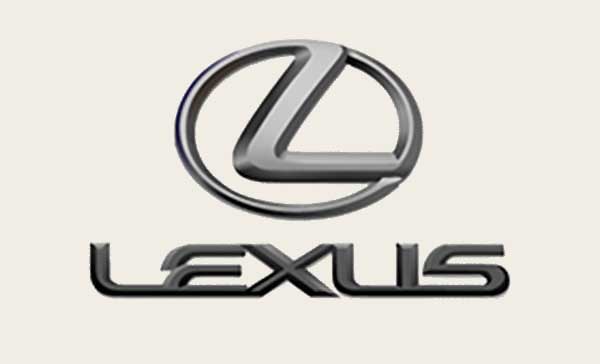
It is commonly believed that the name Lexu comes from "Luxury -
Executive - US", the brief given by the Toyota company for the creation
of a new Luxury Executive brand for the US market. However, according
to Team One, Toyota’s advertising unit for its new luxury brand
in 1986, the name never had a specific meaning. This conflicts with the
Lexus’ website which claims it’s a combination of root
words. "Among these are the Latin "luxus" and the French "luxe" for
elegance and sumptuousness, as well as the Greek "lexicon" for language
and words." The website explains that the result is a fresh, distinct
word that conveys luxury in any language.
"Lexus" wasn’t the first name the group developed. In fact, 219
prospective names were initially considered - "Lexus" wasn’t even
on the list! The front-runner was "Alexis," which it is said was
eventually was reduced to "Lexis" and finally "Lexus." That title beat
out entrants like Verone, Chaparel, Vectre, and Calibre.

The name Lotus is a girl's name of Greek origin meaning "lotus flower".
Lotus is one of the most exotic and languorous of the flower names,
with intriguing significance in both Buddhism and Hinduism, symbolizing
purity, grace and spiritual growth--not to mention a familiar yoga
position.
The company was formed as Lotus Engineering Ltd. by engineers Colin
Chapman and Colin Dare, both graduates of University College, London,
in 1952, but had earlier origins in 1948 when Chapman built his first
racing car in a garage. The four letters in the middle of the logo
stand for the initials of company founder, Anthony Colin Bruce Chapman.
When the logo was created, Colin Chapman's original partners Michael
and Nigel Allen were led to believe that the letters stood for Colin
Chapman and the Allen Brothers.
impetuous rush.
the pick of the bunch, the best.
social distinction or a conspicuous success.
a French diminutive of Elizabeth, which means "God is my oath". In France, it is pronounced more like "Elize".
latinized form of Greek Europe, which meant
"wide face"; from eurys meaning "wide" and ops meaning "face, eye". In
Greek mythology Europa was a Phoenician princess who was abducted and
taken to Crete by Zeus in the guise of a bull.
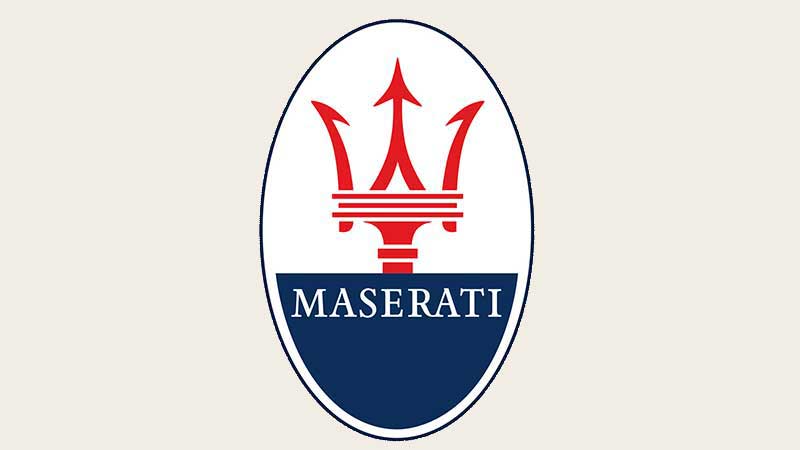
The Maserati company was founded in December 1914 by the brothers
Maserati. Unlike other popular brothers in automotive history, there
were not two or three Maserati brothers, but a whopping seven. Alfieri
headed the launch of the company, and the rest of his brothers assisted
with designing and engineering the machines–that is, apart from
Carlo, a test pilot who died during a race in 1910, and Mario, who was
not interested in engineering or being part of the auto industry.
Brother Mario lent his artistic talents to create the perfect emblem
for the brand in 1926. His inspiration was the trident held by Neptune
(known in Greek mythology as Poseidon) in the Fontana de Nettuno statue
in Bologna’s Piazza Maggiore. This city served as the hometown of
the Maserati family and location of the company’s first plant
before headquarters were moved to Modena. The image represents
Neptune’s command over the seven seas and Maserati’s
command over the space between them. The red trident encircled by a
white oval was designed to compete with the sophisticated appearance of
other Italian brand labels.
In the 1960s and 70s, Maserati's four-seaters have often been named
after racetracks suggested by Adolfo Orsi Jr. Two door cars were named
after winds.
named after a cold northerly wind of southern France,
it was also the first in a series of classic Maseratis to be given the
name of a wind. It was named at the suggestion of Colonel John Simone,
business partner of the French importer Jean Thepenier, a great friend
of Poltrona Frua, the car's interior stylist.
the name for the hot dry south-westerly wind of the Libyan desert. It is also the nickname for Italian scouting planes. Implying both speed and heat, the Ghibli kicks up dust with the intensity of these desert storms and powers across the landscape at hurricane speeds.
following Maserati's tradition it was named after a
wind: the Khamsin, a hot, violent gust blowing in the Egyptian desert
for fifty days a year.
in common with other Maserati cars of the era, it is named
after a wind, Bora being the cool, fierce Adriatic wind that blows from
the north in Trieste, Italy.
not named after a wind but after a star from the
constellation 'Ursa Major', used to locate the North Star. The Merak
and the Bora share the front part of bodyshell up to the doors. The
front ends differ, mainly by the use of dual chrome bumpers on the
Merak, in place of twin trapezoidal grilles on the Bora, but the
similarities end at the B-pillar.
named after the Kyalami Grand Prix Circuit in South
Africa where a Maserati-powered Cooper T81 had won the 1967 South
African Grand Prix.
named after Maserati's 1957 racing victory at the 12 Hours of Sebring.
an Italian word meaning four doors.
The Maserati Mexico's design derived from a 2+2
prototype bodywork shown on the Vignale stand at the October 1965
Salone di Torino and built upon a 4.9-litre 5000 GT chassis, rebodied
after it had been damaged. As the car was sold to Mexican president
Adolfo López Mateos after the show, the model became known as
the Mexico. By coincidence, John Surtees won the Mexican Grand Prix on
a Cooper-Maserati T81 the following year.
Vignale's prototype was preferred, and the production
model was launched by Maserati at the Geneva Motor Show the following
March. The car was christened Indy in honour of Maserati's two
victories at the Indy 500.
Debuted in 2011, the Maserati Levante was named after the Spanish word for a warm, Mediterranean wind that can change from mild to windstorm in an instant.

Early Mazda logo used for 16 years—from 1959 to 1975.
Mazda began as the Toyo Cork Kogyo Co., Ltd, founded in Hiroshima,
Japan, 30 January 1920. Toyo Cork Kogyo renamed itself to Toyo Kogyo
Co., Ltd. in 1927. The company formally adopted the Mazda name in 1984,
though every automobile sold from the beginning bore that name,
starting with the Mazda R360 in 1960, followed by the Mazda Carol in
1962.
The company's name is the Westernized pronunciation of the Mazda
Corporation founder’s name - Jujiro Matsuda. He was known to be a
fervently spiritual man and honored the company with the name it has
kept for almost 100 years.
Interestly, Ahura Mazda was one of the gods of the foremost
civilizations in Western Asia. Ahura Mazda is the god of intelligence,
wisdom, and harmony. He has been recognized as the symbol of the birth
of the Western and Eastern civilizations. He is also considered to
represent the automobile culture. "Mazda" means ‘wisdom,’
while "Ahura" stands for ‘lord’ in Avestan, an Iranian
language. He was also the name of the Zoroastrian God. The Japanese
have been strongly influenced by Zoroastrianism, which is known to be a
peaceful religion.

Over the years, Mazda has used six different bages Its current badge,
introduced in 1997, might remind you of those simplified cartoon
sketches of birds in flight. While there’s actually some truth in
that observation, the influences and history of the Mazda logo are more
subtle - and fascinating - than you’d expect. The Mazda logo is
actually a highly-styled "M" with its arms raised like wings,
symbolizing the brand’s "flight toward the future." This
emphasizes the wide "V" angle in the middle of the "M," which
represents the automaker’s self-proclaimed creativity, vitality,
flexibility, and passion. It’s circled by the future, the doorway
to the 21st century. Overall, it intends to appear sharp, evocative,
and hopeful.
dervived from the Cosmos. Mazda chose to use the name,
reflecting international cultural fascination with the Space Race, as
Mazda wanted to showcase the rotary engine as forward-thinking, with a
focus on future developments and technology.
named after Capella, the brightest star in the constellation Auriga, the sixth-brightest in the night sky and the third-brightest in the northern celestial hemisphere, after Arcturus and Vega.
named for the African Bongo, a type of antelope. The Mazda Bongo van also formed the basis for the long running Kia Bongo range.
meaning family, a reference to the cars with that name being geared towards the family.
The name was taken from the Italian word for "light". The
name was also in common use among Italian car manufacturers of the
1960s for their spacious 2+2 models, leading many to believe the name
meant Luxury.
The name miata derives from Old High German for "reward". The model was launched as the Eunos Roadster in Japan, and is marketed as the MX-5 in most countries. Widely noted for its small, light, technologically modern, dynamically balanced and minimally complex design, the MX-5 has frequently been called a spiritual successor to 1950s and '60s Italian and British roadster sports cars. The Lotus Elan was used as a design benchmark.
The name Lantis is created from the Latin phrase "Latens Curtis", which roughly translates as "To secretly shorten". The Mazda Lantis is a series of two cars sold in Japan from 1993 to 1997. In the rest of the world it was also known as 323F, Astina, Allegro Hatchback or Artis Hatchback.

Gottlieb Daimler originally founded Daimler-Motoren-Gesellschaft (DMG)
in 1890, while Carl Benz began Benz & Cie in 1883. Both businesses
laid the foundation of motorized vehicle transportation. After Daimler
passed away in 1900, chief engineer Wilhelm Maybach took over and
brought on racing enthusiast Emil Jellinek as a partner.
Jellinek’s daughter Mercedes — a Spanish girl’s name
meaning "grace" — was the inspiration for the later trade name.

Mercedes Jellinek, age 12, in 1900, a year before her name was first used as part of the trade name.
Some automakers’ logos change every decade as they struggle to
establish a credible brand identity, while others have remained
consistent for a century. One emblem that has come to represent
quality, innovation, and tradition in the automotive industry is
Mercedes-Benz’s three-pointed star. This iconic design has
adorned the grilles and radiators of quality vehicles for a hundred
years–as well as many personal accessories carried by
enthusiasts.
In 1909, Daimler’s sons Paul and Adolf recalled an 1872 picture
postcard sent by their father to their mother with a three-pointed star
marking the location of his house in Germany with the explanation that
one day the star would shine over his factory and bring prosperity. DMG
took the star as the company’s logo, trademarking three- and
four-pointed stars but only using the three-pointed one. The logo began
with a blue color but was changed to its signature silver after its
involvement in the first Grand Prix at the Nurburgring in 1934. At the
same time, Benz & Cie trademarked its own logo: a laurel wreath
surrounding the company’s name. When the merger between DMG and
Benz & Cie occured in 1926, the company logos combined to become a
laurel wreath surrounding a three-pointed star. The company became
known as Daimler-Benz AG, later Mercedes-Benz using its trade name.
According to the company, the three-pointed star today represents the
automaker’s drive toward universal motorization with its engines
dominating the land, sea, and air (three points).
Mercedes used to have a letter code which told the people about the
features of the car. The code contained out of a three digit number
followed by up to three letters. In this letter code S stood for
"Sonderklasse" (special class = luxury class; E stood for
"Einspritzung" (fuel injection); L stood for "long wheelbase". SL
represents Sports Luxury.
Outside of the Mercedes marketing world the abbreviation SE stands for
"Special Edition" or Special Equipment, depending on the brand.

Although the Mitsubishi Group consists of dozens of companies varying
in specialization–from banks and chemicals to plastics and
aircraft–the corporation has become primarily known for its
commercial and passenger vehicles. The automaker’s identity has
become synonymous with its iconic logo, and Mitsubishi puts a lot of
value in that brand recognition, securing nearly 5,500 registrations of
the emblem in 140 countries.
Mitsubishi’s three-diamond mark carries more than 140 years of
tradition with it, beginning with the Japanese corporation’s
inception. When founding Mitsubishi (originally a maritime transport
company) in the 1870s, Yataro Iwasaki decided the logo should combine
two important family crests: the triple-oak-leaf crest of the Tosa Clan
from where Yataro was born and the three-tiered water chestnut leaves
of the Iwasaki family. Thus, the logo is an amalgamation of two family
crests which–after some widening and simplification–was
registered in 1914 and has remained the same for 100 years.
The three diamonds in the Mitsubishi logo represent reliability,
integrity, and success. The three-point fan represents "sealing the
deal" between the customer and the product being provided by
Mitsubishi. Thus, the business has strict usage and identity guidelines
that monitor usage in publications and on products. Mitsubishi even has
a Corporate Name and Trademark Committee that will take legal action
against abuse of the logo.
a soldier of a cavalry regiment armed with lances. The
name had its origins in the 1950s. Dodge first used the Lancer name
from 1955 to 1959 to designate the two- and four-door hardtop (no
B-pillar) models in the full-sized Coronet, Royal, and Custom Royal
lines. The theme of these names was royal military guards.
The Mitsubishi takeover of Chrysler's manufacturing
operations in Australia led to the introduction of a number of new
models, the most notable of which were a pair of 2-door coupes - the
Scorpion and its big brother, the Starion. The story goes that the
Japanese bosses of Mitsubishi in Japan had been looking at producing a
car that would go head to head with the Ford Mustang in the US, and
asked their stateside bosses to suggest an appropriate name.
As the Mustang and others like it were known as Pony Cars, the name
Stallion was suggested. When the car they developed was finally
released it was given the suggested name, but with its Japanese
pronunciation - Starion.
the model name was derived from the French word galant,
meaning "chivalrous". The first generation of Galants was named the
Colt Galant (1971), which took its name from the Mitubishi Colt (1965).
named after the eighteenth letter of the Greek alphabet,
transliterated as ‘s’. Introduced as the Chrysler Sigma
(1977), it became the Mitsubishi Sigma in 1981 when took over
Chrysler’s car manufacturing operations in Adelaide.
The name is Latin, and means literally 'Great Greece'.
magna mater Latin meaning 'great mother'; a mother-goddess; a fertility
goddess, especially Cybele.
a nameplate that has been applied to a number of
automobiles since 1962. It was first introduced with a series of kei
and subcompact cars in the 1960s, and then for the export version of
the subcompact Mitsubishi Mirage between 1978 and 2002. Initially,
Mitsubishi cars were marketed under the ‘Colt’ name. The
models sold in Australia were drawn from a line of small cars sold
predominantly in Japan, and continued on in various similar forms until
1971.
its name is a contraction of the English language phrase
Delivery car. The passenger car versions were known as Delica Star
Wagon from 1979 until the 1994.
the Pajero nameplate derives from Leopardus pajeros, the Pampas cat, a small wild cat native to South America.
The name Triton means God Of The Sea and is of Greek
origin. Triton is a name that's been used by parents who are
considering baby names for boys. In Greek mythology, the son of
Poseidon and Amphitrite. Depicted as having the head and torso of a man
and the tail of a fish.
a person who is not from your country or area.

The Pontiac brand was introduced by General Motors in 1926 as the
companion marque to GM's Oakland division, and shared the GM A
platform. Purchased by General Motors in 1909, Oakland continued to
produce modestly priced automobiles until 1931 when it was renamed
Pontiac. It was named after the famous Ottawa chief who had also given
his name to the city of Pontiac, Michigan where the car was produced.
Pontiac or Obwandiyag (c. 1714/20 – April 20, 1769) was an Odawa
war chief known for his role in the war named for him, from 1763 to
1766 leading Native Americans in a struggle against British military
occupation of the Great Lakes region. It followed the British victory
in the French and Indian War, the North American front of the Seven
Years' War.

A Native American headdress was used as a logo until 1956. This was
updated to the Native American red arrowhead design for 1957 in all
usage except the high-beam indicator lamp, which retained the original
logo through 1970. The arrowhead logo is also known as the Dart.
The Pontiac Chieftain was produced from 1949 to 1958. The 1949 Chieftain and Streamliner models were the first all new car designs to come from Pontiac in the post World War II years. Previous cars had been 1942 models with minor revisions. Its name recalls the Native American war chief, Pontiac or Obwandiyag (c. 1714/20 – April 20, 1769).
The Pontiac Bonneville was built by Pontiac from 1957 to 2005. Bonnevilles were full-sized, with the exception of a brief period of mid-size between 1982–1986. The brand was introduced as a limited production performance convertible during the 1957 model year. The name was taken from the Bonneville Salt Flats in Utah, the site of much early auto racing and most of the world's land speed record runs, which was named in turn after U.S. Army officer Benjamin Bonneville.
The name Catalina was first used on the 1950 Chieftain Series 25/27 hardtop, Pontiac's top trim level package at the time, and later added to the Star Chief in 1954, Pontiac's equivalent of the Chevrolet Bel Air. Initially, the name was used strictly to denote hardtop body styles, first appearing in the 1950 Chieftain Eight and DeLuxe Eight lines. In 1959, the Catalina became a separate model, as the entry-level full-size Pontiac. The name is taken from Catalina Island, California.
Parisienne or La Parisienne means a grammatically
female person or thing from Paris, France. The Pontiac Parisienne is a
full-size rear-wheel drive vehicle that was sold by Pontiac on the GM B
platform in Canada from 1958 to 1986 and in the United States from 1983
to 1986. For most of its run, the Canadian Parisienne was nearly
mechanically identical to the American Chevrolet Impala. The Parisienne
wagon continued under the Safari nameplate until 1989.
All Potiacs sold in Australia were sourced from GM Canada. GM-H sold
Pontiac Laurentian sedans from 1959 to 1963. For model year 1964 the
Laurentian badge was dropped in favour of "Parisienne" but this car was
still sold as a "Laurentian" in New Zealand.
an adjective,, relating to, or being in the vicinity
of the St. Lawrence River. From the 1950s through 1970s, GM of Canada
offered a unique hierarchy of full-size Pontiac series different from
the American Catalina, Star Chief, Executive and Bonneville lines. In
Canada, Pontiac was marketed as a low priced car, rather than a medium
price make as in the U.S.
The Pontiac Parisienne debuted in Australia in 1964 and was available
as a locally assembled 4 door sedan (pillared) with the 283 cubic inch
engine. In 1965 the Pontiac Parisienne 4 door (pillarless) Sport Sedan
Hardtop and Chevrolet's Pillarless Impala Sports Sedan were introduced,
but two years later the (1967 Model) the pillared sedans ceased to be
available. 1965 also saw the introduction of the 327 cubic inch V8 for
the Pillarless versions and the 283 cubic engine remained as the power
plant to the pillared versions. In 1966 the Pontiac Parisienne Thin
Pillar cost £5,799 and £6,099 for the Pillarless, or Sports
Sedan version.

Initially, there was no symbol on Porsche’s cars, only the
automaker’s name. What isn’t agreed upon is how the crest
originated. North Americans contend that in 1951, Ferdinand
Porsche’s son Ferry met with American Porsche distributor Max
Hoffman at a New York restaurant. Hoffman suggested the automaker
needed a symbol or mascot, which Ferry sketched onto a napkin. After
bringing the design back to Germany, Ferry had it cleaned up and put on
the company’s cars.
However, Germans contend that the Porsche logo was designed by engineer
Franz Xaver Reimspiess, who worked with Ferdinand at his request to
make a lasting company emblem (prior to his death in 1951). No
American-suggested napkin drawing ever happened. Either way, the first
Porsche badge appeared in 1953 on the horn button and a couple years
later on the front of a 356 Coupe.
The Porsche emblem, which has the appearance of a coat of arms and is
popularly known for being copied by Ferruccio Lamborghini, is inspired
by two designs. The rearing black horse in the center is from
Stuttgart’s coat of arms, also called its city seal, which has
included horses in its designs since the 14th century.
Not only was this an homage to where the company was based and returned
to life after hiding in Gmund during World War II, Porsche sees the
wild animal as an expression of the company’s forward-thrusting
power. Porsche’s horse is a bit more dynamic, with thinner legs,
a raised head, and flowing hair. The antlers and the red/black stripes
are taken from the state crest of Württemberg, where Stuttgart is
located. The original crests can still be ordered through Porsche
centers and are hand-made in Germany.
This famous model originally was designated as the "Porsche 901" (901 being its internal project number). A total of 82 cars were built as which were badges as 901s. However, French automobile manufacturer Peugeot protested on the grounds that in France it had exclusive rights to car names formed by three numbers with a zero in the middle. Instead of selling the new model with a different name in France, Porsche changed the name to 911. Internally, the cars' part numbers carried on the prefix 901 for years. Production began in September 1964, with the first 911s exported to the US in February 1965.
the Carrera name was first used in 1972, and means to race or run. Specifically, Porsche was referring to the Carrera Panamericana Mexican endurance race, where the brand had great success with its 550 Spyder models. The first of the five races was in 1950 and ran on the north-south Mexican section of the then-new Pan-American Highway over five days. It was known to be the most dangerous race of any type in the world.
First launched in the 2006 model year, the Cayman is a coupé derived from Porsche's second and third generation Boxster roadster. Contrary to popular belief, the car is not named after the Cayman Islands. Both the car and the islands are named after the caiman, a member of the alligator family. When the Cayman arrived at dealerships for sale, the automaker adopted four caimans at Stuttgart's Wilhelma Zoo.
The Porsche Panamera is a mid/full-sized luxury vehicle. It is front-engined and has a rear-wheel-drive layout, with all-wheel drive versions also available. The Panamera's name is derived, like the Porsche Carrera lineage, from the Carrera Panamericana race.
Macan is the Javanese word for the Indonesian Tiger. The Macan was originally known by its code name Cajun, a portmanteau of Cayenne Junior.
takes its name from the hot cayenne peppers; Cayenne is also the name of the capital city of French Guiana, located in South America. The Porsche Cayenne is a series of mid-size sport utility vehicles manufactured since 2002. The Cayenne shares its platform, body frame, doors and electronics with the similar Volkswagen Touareg and Audi Q7.
The 718 Boxster takes its name from a combination of the words “Boxer engine” and “roadster.”

Rolls-Royce was a British luxury car and later an aero-engine
manufacturing business established in 1904 by the partnership of
Charles Rolls and Henry Royce. Building on Royce's reputation
established with his cranes they quickly developed a reputation for
superior engineering by manufacturing the "best car in the world".
The current Rolls Royce logo, which was the centrepiece of a more
elaborate emblem, was originally displayed in the colour red. However,
it was changed to black in 1934 after the death of Henry Royce. It is a
common belief that the colour was changed as a mark of respect to the
death of Royce, however it was Henry himself who had already decided to
change the color of their badge because he realized that red can clash
to some of their models' color.
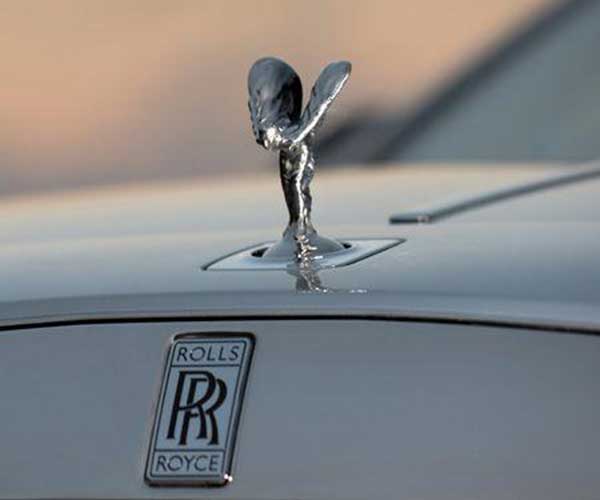
The Spirit of Ecstasy, also called Emily, Silver Lady, or Flying Lady,
is the bonnet ornament sculpture on Rolls-Royce cars. It is in the form
of a woman leaning forwards with her arms outstretched behind and above
her. Billowing cloth runs from her arms to her back, resembling wings.
The first Rolls-Royce motorcars did not feature radiator mascots; they
simply carried the Rolls-Royce emblem. John Edward Scott-Montagu, who
became the second Baron Montagu of Beaulieu in 1905, commissioned his
friend, sculptor Charles Robinson Sykes, who worked in London under the
nobleman's patronage, to sculpt a personal mascot for the bonnet of his
1909 Rolls-Royce Silver Ghost, Sykes chose actress Eleanor Velasco
Thornton as his model. Though married to Lady Cecil Victoria Constance
Kerr since 1889, Baron Montagu fell in love with Eleanor (also known as
Thorn) in 1902 when she worked for him on The Car Illustrated motoring
magazine, which he published. She became his mistress and they had an
illegitimate daughter, Joan Eleanor Thornton, whom she gave up for
adoption. Their secret love was to remain hidden, limited to their
circle of friends, for more than a decade.
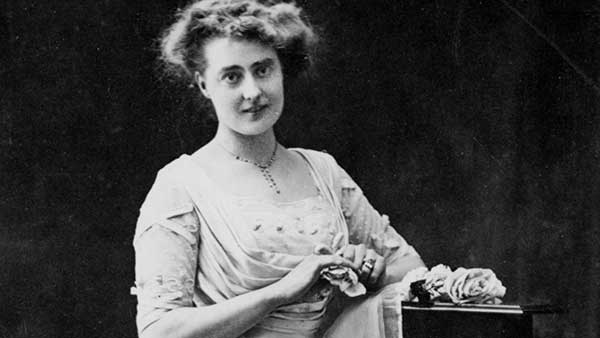
Eleanor Velasco Thornton
Sykes originally crafted a figurine of her in fluttering robes, having
placed one forefinger against her lips – to symbolize the secret
of their love affair. The figurine was consequently named The Whisper
and is on display at the National Motor Museum in Beaulieu along with
other Spirit of Ecstasy figurines.
Wraith is an old Scottish word meaning "ghost" or
"spirit", continuing Rolls-Royce's (at the time) new nomenclature that
they had adopted, using words relating to silent, gracious, elegant,
rarely seen and highly sought after for these reasons. The Wraith name
originated from a 40/50 h.p, (Silver Ghost) that was named "The Wraith"
by its original owner.
from the French corniche, a coastal road,
especially along the face of a cliff, most notably the Grande Corniche
along the French Riviera above the principality of Monaco.
the Camargue derives its name from the coastal region in southern France at the mouth of the Rhone River.
named after the Cullinan Diamond, the largest
gem-quality rough diamond ever discovered. The Cullinan is the first
SUV to be launched by the Rolls-Royce marque, and is also the brand's
first all-wheel drive vehicle.

The Rootes Group or Rootes Motors Limited was a British automobile manufacturer based in the Midlands. In the decade beginning 1928 the Rootes brothers, William and Reginald, made prosperous by their very successful distribution and servicing business, were keen to enter manufacturing for closer control of the products they were selling. With the financial support of Prudential Assurance, the two brothers bought some well-known British motor manufacturers, including Hillman, Humber, Singer, Sunbeam, Triumph, Talbot, Commer and Karrier, controlling them through their parent, Rootes' 60-per-cent-owned subsidiary, Humber Limited. At its height in 1960, Rootes had manufacturing plants in the Midlands at Coventry and Birmingham, in southern England at Acton, Luton and Dunstable, and a brand-new plant in the west of Scotland at Linwood.
By 1960 annual production was around 200,000 vehicles. By mutual agreement, from mid-1964, Rootes Motors was taken over in stages by Chrysler Corporation, which bought control from the Rootes family in 1967. By the end of 1978 the last of the various elements of Chrysler UK had been sold to Peugeot and Renault.

the Hillman Motor Car Company, founded in 1907 and based in Ryton-on-Dunsmore, near Coventry, England. Before 1907 the company had built bicycles. Newly under the control of the Rootes brothers, the Hillman company was acquired by Humber in 1928. Hillman was used as the small car marque of Humber Limited from 1931, but until 1937 Hillman did continue to sell large cars. The Rootes brothers reached a sixty per cent holding of Humber in 1932 which they retained until 1967, when Chrysler bought Rootes and bought out the other forty per cent of shareholders in Humber. The marque continued to be used under Chrysler until 1976.
The name, meaing "a boldly flirtatious girl or young woman". was first introduced in 1932. The 1956 Two Tone Minx was called the "Gay Look" and led to the advertising slogan "As Gay as a Mardi Gras". A smaller car, the Husky with van like body and using the old side-valve engine, was also new for 1954. The floor pan of this model was later to form the basis for the Sunbeam Alpine, Sunbeam also being part of the Rootes empire. A complete departure in 1963 was the Hillman Imp using a Coventry Climax all alloy, 875 cc rear engine and built in a brand new factory in Linwood, Scotland. The Super Minx of the 1960s was re-baged as the Singer Vogue, Humber Sceptre, Humber 90 and Humber Vogue.s
A new car called the Hunter was introduced in 1966 with, in 1967, a smaller-engined standard version using the old Minx name. These are frequently given their factory code of "Arrow", but this name was never officially used in marketing.

Humber Limited was a British manufacturer of bicycles, motorcycles and motor vehicles incorporated and listed on the stock exchange in 1887. It took the name Humber & Co Limited because of the high reputation of the products of one of the constituent businesses that had belonged to Thomas Humber, a British engineer and cycle manufacturer who developed and patented a safety bicycle (1884) with a diamond-shaped frame and wheels of similar size. The motor division became much more important than the cycle division and the cycle trade marks were sold to Raleigh in 1932. The motorcycles were withdrawn from sale during the depression of the 1930s.
numerous Humber models were named after birds. There include the Snipe, Super Snipe and Hawk. Other model names - Pullman, Imperialand Sceptre, relating to sovereignty. The Humber Vogue name was shared with the Singer Vogue, a re-badged Hillman Super Minx, in the 1960s.
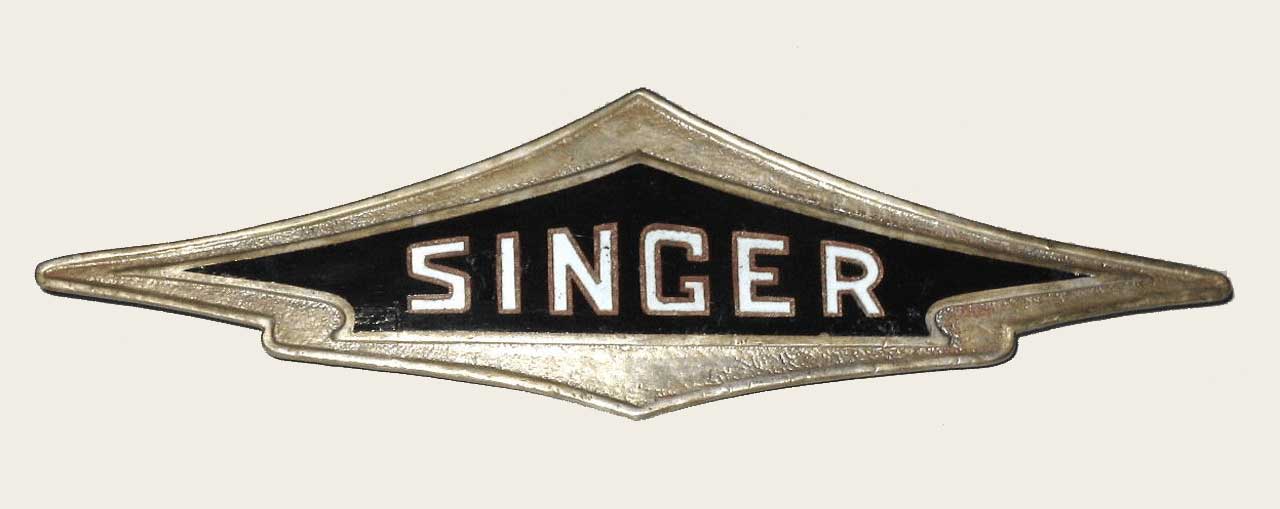
Singer Motors Limited was a British motor vehicle manufacturing business, originally a bicycle manufacturer founded as Singer & Co by George Singer, in 1874 in Coventry, England. From 1901 George Singer's Singer Motor Co made cars and commercial vehicles. William Rootes, a Singer apprentice at the time of its development and consummate car-salesman, contracted to buy 50, the entire first year's supply. It became a best-seller. Ultimately, Singer's business was acquired by his Rootes Group in 1956.
the Gazelle was a re-styled verson of the Hillmman Minx, positioned between the basic Hillman and the more sporting Sunbean version. The Humber Vogue name was shared with the Singer Vogue, a re-badged Hillman Super Minx, in the 1960s.

the Sunbeam name had been registered by John Marston in 1888 for his bicycle manufacturing business. Sunbeam motor car manufacture began in 1901. In-house designer Coatalen's enthusiasm for motor racing accumulated expertise with engines. Sunbeam manufactured their own aero engines during the First World War and 647 aircraft to the designs of other manufacturers. Engines drew Sunbeam into Grand Prix racing and participation in the achievement of world land speed records.
In spite of its well-regarded cars and aero engines, by 1934 a long period of particularly slow sales had brought continuing losses. There was a forced sale, and Sunbeam was picked up by the Rootes brothers. Manufacture of Sunbeam's now old-fashioned cars did not resume under the new owners, but Sunbeam trolleybuses remained in production. Rootes had intended to sell luxury cars under the Sunbeam name, but almost four years after their purchase, in 1938, the two brothers instead chose to add the name Sunbeam to their Talbot branded range of Rootes designs calling them Sunbeam-Talbots. In 1954 they dropped the word Talbot, leaving just Sunbeam. Sunbeam continued to appear as a marque name on new cars until 1976. It was then used as a model name, firstly for the Chrysler Sunbeam from 1977 to 1979, and, following the takeover of Chrysler Europe by PSA Group, for the Talbot Sunbeam from 1979 through to its discontinuation in 1981.
a 2-seater sports car, first introduced in 1953 as the first vehicle from Sunbeam-Talbot to bear the Sunbeam name alone since Rootes Group bought Clément-Talbot, and later the moribund Sunbeam from its receiver in 1935.
a high performance V8 version of the British Rootes Group's Sunbeam Alpine roadster, designed in part by American car designer and racing driver Carroll Shelby and produced from 1964 until 1967. Rootes contracted the assembly work to Jensen at West Bromwich in England, and paid Shelby a royalty on every car produced. Shortly before its public unveiling at the New York Motor Show in April 1964 the car was renamed from Thunderbolt to Tiger, inspired by Sunbeam's 1925 land-speed-record holder.

Talbot or Clément-Talbot Limited was a British automobile manufacturer founded in 1903. Clément-Talbot's products were named just Talbot from shortly after introduction, but the business remained Clément-Talbot Limited until 1938 when it was renamed Sunbeam-Talbot Limited. In the mid-1930s, Rootes bought the London Talbot factory and Antonio Lago bought the Paris Talbot factory, Lago producing vehicles under the marques Talbot and Talbot-Lago. Rootes renamed Clément-Talbot Limited Sunbeam-Talbot Limited in 1938, and stopped using the brand name Talbot in the mid-1950s. The Paris factory closed a few years later.
Commer was a British manufacturer of commercial vehicles from 1905 until 1979. Commer vehicles included car-derived vans, light vans, medium to heavy commercial trucks, military vehicles and buses. The company also designed and built some of its own diesel engines for its heavy commercial vehicles.
The Commer Light Pick-Up was a utility based on the Hillman Minx saloon and produced by Commer during the 1950s; a similar Hillman-badged model was also produced. Many examples of Commer BF were coach-built as ice cream vans. The Commer name was replaced by the Dodge name during the 1970s, following the takeover of Rootes by Chrysler Europe.
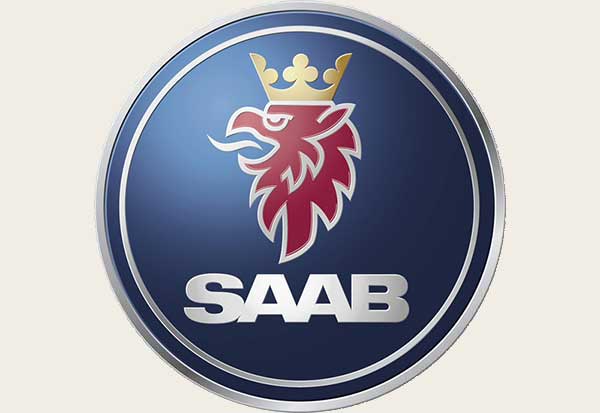
Saab takes its name from Saab AB, "Svenska Aeroplan Aktiebolaget"
(Swedish for "Swedish aeroplane corporation"), a Swedish aerospace and
defence company, that was created in 1937 in Linköping.
Although we associate the brand's logo with Saab, it had been used by
Scania since the beginning of the 20th century. It’s based on a
mythological creature with the head of a bird with the body of a lion:
the griffin (or Gripen, the same name used for one of the
company’s fighter planes). The red-and-gold creature is the
official coat of arms of the Count von Skane, which became the emblem
for the Swedish province Skane where the companies were formed.
The creature, which symbolizes vigilance, wasn’t used on Saab
vehicles until 1984, when designer Carl Frederik Reuterswärd
revamped the emblem’s appearance. He stated, "The Symbol consists
of a roundel inscribed with two circles, transposed to form a
cylindrical band and create an impression of movement. Although each is
shown in its own perspective, Saab and Scania are seen as a unit." The
griffin emblem was used by Saab until 2010.

The name Subaru is Japanese, meaning 'unite'. Subaru is also the Japanese name for the Pleiades star cluster M45, or the "Seven Sisters" (one of whom tradition says is invisible – hence only six stars in the Subaru logo), which in turn inspires the logo and alludes to the companies that merged to create Fuji Heavy Industries, the Subaru company's former name.
Italian word for lion.
the name Sambar is very similar to the top trim package
for the Volkswagen Type 2 called the Samba introduced in 1951, which
also used an air-cooled engine installed in the back, utilizing
rear-wheel-drive, and was available in pickup configurations with
fold-down beds. The name Sambar, recalling a Brazilian dance of African
origin, reflected the vehicle's suitablilty to go on safari, and also
made a connection to the company's 2 and 4-door model, the
African-inspired name, Leone (meaning Lion).
the name of Subaru's new 1992 compact was, initially,
to be called the Loyale, displaying an official photograph of the
four-door sedan, but was changed at the last minute. The name is a play
on the word 'impress'.
Subaru claimed the name WRX stands for "World Rally eXperimental".
a midsize car built by Japanese automobile manufacturer Subaru since 1989. The Legacy was introduced in 1989 to provide Subaru a vehicle to compete in the lucrative North American mid-size market against the Honda Accord, Toyota Camry, Mazda 626, and Nissan Stanza. The Legacy is sold as the Liberty in Australia out of deference to Legacy Australia, an organisation dedicated to caring for the families of military service veterans.
the word leone is Italian for lion. The Subaru Leone is a compact car produced by the Japanese car manufacturer Subaru from 1971 to 1994.It was released as a replacement to the Subaru 1000 and was the predecessor to the Subaru Impreza.
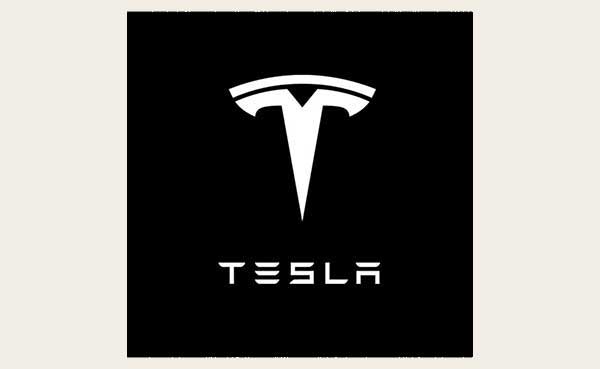
The company's name is a tribute to Serbian inventor and electrical
engineer Nikola Tesla, best known for his contributions to the design
of the modern alternating current (AC) electricity supply system.
The most apparent and universally accepted explanation of the shpe of
the Tesla logo is that it is the letter ‘T,’ signifying the
name of the brand (like ‘H’ for Honda). It’s depicted
as a capital letter ‘T’ with a triangular gap in the top
and a curved shield across the top. However, because this obvious
explanation has never officially been confirmed by the company,
speculation has run rampant over the years as many fans have developed
theories on what it alternately represents.
For instance, the name Tesla is Serbian for "adze," the name of a
curved cutting tool. Perhaps that’s what is depicted on the Tesla
badge. Or, it could be any of these popular hypotheses: A stylized
Nikola Tesla coil; Part of the schematics symbol for "battery"; The
rotor slot/post in an AC induction motor; A spike, considering how it
cuts into the horizontal line underneath it; One pole in a rotational
electric motor, with the split being the air gap between the rotor and
the stator; A push self-defense knife; A cat’s nose–an
amazing accurate observation once you notice the resemblance, and if
so, a nod to the Jaguar brand.

'Toyoda', from which the name Toyota is derived, means 'fertile rice
paddies' in Japanese. In some Eastern cultures, an abundance of rice is
a sign of prosperity.
In reality, it was the name of the company's founder. In 1936, Toyota
entered the passenger car market with its Model AA and held a
competition to establish a new logo emphasizing speed for its new
product line. After receiving 27,000 entries, one was selected that
additionally resulted in a change of its name to "Toyota" from the
family name "Toyoda". The new name was believed to sound better, and
its eight-stroke count in the Japanese language was associated with
wealth and good fortune. The original logo is no longer found on its
vehicles but remains the corporate emblem used in Japan.
The currently elliptical logo used by Toyota today took five years to
develop and was revealed in October 1989 to commemorate Toyota’s
50th anniversary. The company wanted to create a new logo that
established a strong identity for Toyota as it grew in markets outside
of Japan. The two inner, perpendicular ellipses symbolize the merging
of the hearts of customers and the company (also said to be the
product). That mutual relationship is surrounded by the greater oval of
technological progress and the whole market which embraces Toyota. Each
oval has a different stroke thickness to reflect brush strokes in
Japan’s calligraphy. Another claim is that the three ovals
represent the three cultural aspects of the company: freedom, team
spirit, and progress.
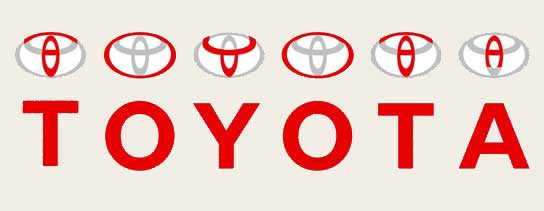
Even the negative space in the logo represents something: boundless
opportunities and infinite values in the quality/enjoyment of the
company’s products. The most obvious shape that can be seen in
the badge is the letter "T" of the word "Toyota" but every letter is
actually intentionally hidden in there.
The word "corona" is Latin for "crown", a
reference to an earlier vehicle Toyota offered called the Toyota Crown.
In many countries, the Corona was one of Toyota's first international
exports, and was shortly joined by the smaller Toyota Corolla. The
Corona was manufactured between 1957 and 2001.
The name Corolla is part of Toyota's naming tradition
of using names derived from the Toyota Crown for sedans, with "corolla"
Latin for "small crown".
The name Corolla is part of Toyota's naming tradition
of using names derived from the Toyota Crown for sedans, with "corolla"
Latin for "small crown". The Corolla was introduced in 1966.
The first Toyota named Crown was released in Japan
since 1955. At that time it was determined that future models would
have names based on variation of 'Crown'.
derived from the Japanese phrase kanmuri, meaning "little crown".
a derviative of an ancient Greek word meaning
"tomorrow," "soon," or "the dawning of a new day.". The Aurion is a
mid-size car produced by Toyota in Australia and parts of Asia from
2006 to 2017. In the two generations it was produced, the Aurion was
derived from the equivalent Toyota Camry.
took its name from the sceptre, an accessory to a crown.
the Crown's North American counterpart, while not
named after a crown, is named after the mythical island from the
legends of King Arthur. Toyota marketed the Avalon as a replacement for
the Cressida, a model discontinued for the American market in 1992.
the "Cressida" name derives from the Trojan character.
the Celica name derives from the Latin word coelica
meaning "heavenly" or "celestial". The Toyota Celica was produced by
Toyota from 1970 to 2006.
the styling of the Supra was derived from the Toyota
Celica, but it was both longer and wider. The name, first used as the
Celica Supra (Supura in Japan, meaning 'superior'), indicated it was
the deluxe or 'superior' model to the standard Celica. In 1986, Toyota
stopped using the prefix Celica and began calling the car Supra.
the name has similar origins to Corolla, as it
means small star burning brightly. The Toyota Starlet was manufactured
by Toyota from 1973 to 1999, replacing the Publica, but retaining the
Publica's "P" code and generation numbering.
The various meanings of "Mark" are the same as in
English (target, grade, fame). "Corona Mark II" can be taken to mean
that the car is both "the second-generation model" and "an upgraded
version" of the Corona.
used with its meaning of a high-performance glider.
the name "Tercel" derives from the Latin word for
"one third" as the Tercel was slightly smaller (one-third) than the
Corolla. In much the way "tiercel" refers to a male falcon, which is
one-third smaller than its female counterpart. The Toyota Tercel was
manufactured by Toyota from 1978 to 1999 across five generations, in
five body configurations sized between the Corolla and the Starlet. The
Tercel was the first front-wheel-drive vehicle produced by Toyota.
Prius is a Latin word meaning "first",
"original", "superior" or "to go before", a reference to it being
Toyota's first hybrid powered motor vehicle, a pioneer in Toyota's move
into electrically power vehicles. The Toyota Prius is a full hybrid
electric automobile developed and manufactured by Toyota since 1997.
derived from the French term avancer, meaning "to advance." Avensis also means "to carry away" in Latin.
named after the Australian town of Tarago, New South
Wales. The Toyota Tarago is the marketing name for several Toyota
people mover vans sold in the Australian market from 1983 to 2019. From
February 1983 to 1990, the Tarago was a rebadged version of the Toyota
TownAce/MasterAce Surf sold in Japan. From September 1990 to late 2019,
the Tarago was based on the Toyota Previa model. The name "Previa" is
derived from the Spanish and Italian for "preview," as Toyota saw the
first Previa as a vehicle that would preview technologies used in
future minivans. The American derivate, the Toyota Sienna, is named for
the Italian city of Siena, in the region of Tuscany.
a German surname first recorded around the 14th
century and originated from a pre 7th century word klouc meaning noble
or refined.
Spanish, Galician, Portuguese, and Jewish (Sephardic) habitational name from prado 'meadow' (from Latin pratum).
Recreational Activity Vehicle. Rav is also the Hebrew
generic term for a teacher or a personal spiritual guide, though that
meaning never influenced Toyota in the selection of the name. RAV4
stands for "Recreational Activity Vehicle: 4-wheel drive", because the
aforementioned equipment is an option in some countries. The L of RAV
4L stands for Liberty.
Combines 4-wheel drive and off-road runner.
Reflects wide-open spaces and a youthful voice.
the Cruiser name comes from the FJ 40-series Land Cruiser first introduced in 1961
Named after an inhabitant of the Scottish Highlands; conveys power, energy, and ruggedness.
A rectangular arrangement of rows and columns --
fitting the cross-functional nature, the versatility, and the interior
functionality of the vehicle
Mid-engine, Rear-wheel drive, 2 seater
Derived from the Latin prefix meaning "to surpass" or "go beyond"
stems from a goddess in Greek mythology, named Charis,
who was a symbol of beauty and elegance. We used the German expression
of agreement, "ya", because we think this new name best symbolizes the
car's broad appeal in styling and is representative of Toyota's next
generation of global cars
a combination of "high" and "luxury". The Hilux started
production in March 1968, under the name Toyota Store. The Hilux was
engineered and assembled by Hino Motors to replace the earlier vehicle
as a more up-market model, alongside the larger and older Toyota Stout
utility.
the name combines "high" and "ace," signifying that this vehicle surpasses its predecessor, the Toyo Ace.
A combination of "town" and "ace." Also given the Liteace name in some markets.
"Corsa" is the Italian word for "race" or "run"
A "coaster" is a ship that is used to carry cargo along the coast from port to port.
short for "dynamic.

The Triumph Motor Company had its origins in 1885 when Siegfried
Bettmann of Nuremberg formed S. Bettmann & Co. and started
importing bicycles from Europe and selling them under his own trade
name in London. The trade name became "Triumph" the following year, and
in 1887 Bettmann was joined by a partner, Moritz Schulte, also from
Germany. In 1889, the businessmen started producing their own bicycles
in Coventry, England. In 1930 the company's name was changed to Triumph
Motor Company.

The marque's first logo was a simple wreath encircling the word
"Triumph". In 1944 Standard bought the company and new Triumph
roadsters and saloons were created. Then the company decided to rebrand
the two marques: Standard made the saloons and Triumph the roadsters
and sports cars. A new Triumph logo was developed, in the sylised shape
of a car radiator. The model name was incorporated into the badge on
their sports car models.
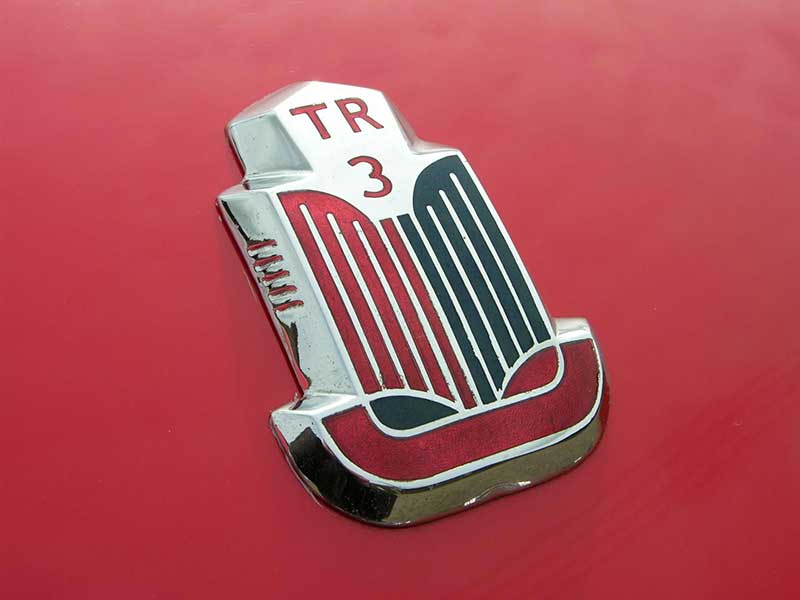
a mountainous area in Northern Italy.
The choice of the Herald name suggests that the car
was originally intended to be marketed as a Standard, as it fits the
model-naming scheme of the time (Ensign, Pennant and Standard itself).
But by 1959 it was felt that the Triumph name had more brand equity,
and the Standard name was phased out in Britain after 1963. The name
was chosen as the car was the first in a series of new, more modern
cars.
manufactured between 1962 and 1980 and based on the
chassis of the Triumph Herald saloon, it was named to honour the World
War II fighter plane of the same name.
a French word meaning to travel at speed. The Vitesse
name was first used by Austin on their 1914–16 Austin 20 (hp) and
30 (hp) Vitesse models, this was followed in 1922 by G. N.(Godfrey
& Nash) on their GN Vitesse Cyclecar, and then by Triumph on a car
made between 1935 and 1938. After the last Triumph Vitesse was made in
July 1971, the name remained unused until October 1982, when Rover used
it on their SD1 until 1986, and one final time on their Rover 800, 820
and 827 models from October 1988 to 1991, at which time that car was
rebodied as the R17 version, which was produced until 1998 as the Rover
Vitesse Sport.
The Standard Motor Company Limited was a motor vehicle manufacturer, founded in Coventry, England, in 1903 by Reginald Walter Maudslay. It purchased Triumph in 1945 and in 1959 officially changed its name to Standard-Triumph International and began to put the Triumph brand name on all its products.
For many years, it manufactured Ferguson TE20 tractors powered by its Vanguard engine. All Standard's tractor assets were sold to Massey Ferguson in 1959. In September 1959, Standard Motor Company was renamed Standard-Triumph International Limited. A new subsidiary took the name The Standard Motor Company Limited and took over the manufacture of the group's products. The Standard name was last used in Britain in 1963, and in India in 1988.

A one-model policy for the Standard marque (alongside a range of new Triumphs) was adopted in 1948 with the introduction of the 2-litre Standard Vanguard, which was styled on American lines by Walter Belgrove, and replaced all the carry-over pre-war models. This aptly named model was the first true post-war design from any major British manufacturer. It was also the first model to carry the new Standard badge, which was a heavily stylised representation of the wings of a griffin, but based on the Triumph badge. The fastback Vanguard Phase 1 was replaced in 1953 by the notch-back Phase 2 and in 1955 by the all-new Phase 3, which resulted in variants such as the Sportsman, Ensign, Vanguard Vignale and Vanguard Six.
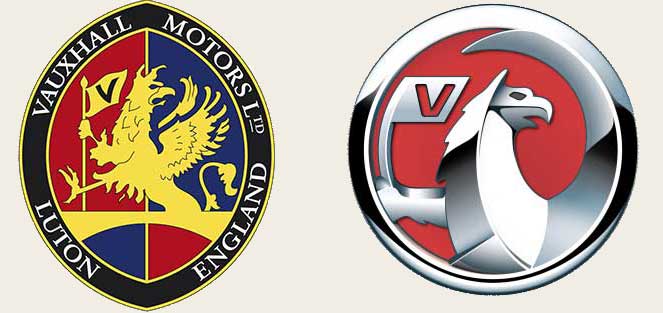
The manufacturer was originally named Vauxhall Iron Works before
settling on its current name. Vauxhall designed its original logo when
it was founded in 1857; as a nod to its local heritage, Vauxhall chose
the image of a griffin driving a "V" flag into the ground. After its
founder left the company and it began producing cars, the name and logo
were retained to pay homage to its roots. The griffin, a mythical
creature with the body of a lion and the head/wings of an eagle,
reflects the coat of arms of Sir Falkes de Breauté, a mercenary
soldier who was given the Manor of Luton by King John in the thirteenth
century. His mansion, Fulk’s Hall, became known eventually as
Vauxhall. The company's major manufacturing facilities are in Luton. '
to conquor. The Vauxhall Victor, codenamed the F
Series, was produced by Vauxhall from 1957 to 1976. Following then
current American styling trends, the windscreen pillars of the first
series sloped backwards. In fact, the body style was derived directly
from the classic 55 Chevrolet Bel Air, though this was not obvious
unless the two cars were viewed side by side.
Latin word for speed.
French word meaning 'long live'. The Viva was
developed jointly with the Opel Kadett A. The third generation HC
series was the last solely Vauxhall designed passenger car when it
ceased production in 1979. The Holden Torana was based on the Vauxhall
Viva.
from the mythical beast the wyvern, and may be due to a misidentification of the heraldic griffin on the Vauxhall badge.
the summit or highest part, as in the crest of a
bird. The Vauxhall Cresta, produced from 1954 to 1972, was an upmarket
version of the Vauxhall Velox. It was so named as, at the time of its
release, it was the make's top of the range model. The Viscount
(1966–1972) was an upmarket Cresta PC.
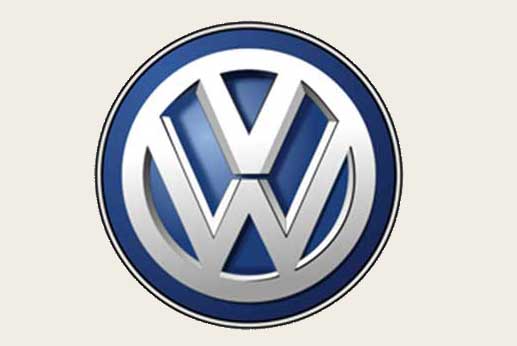
The need for a people's car (Volkswagen in German, and in the English-speaking world in the early 20th century as "folks' wagon"), its concept and its functional objectives were formulated by the leader of Nazi Germany, Adolf Hitler, who wanted a cheap, simple car to be mass-produced for his country's new road network (Reichsautobahn). Lead engineer Ferdinand Porsche and his team took until 1938 to finalise the design. The result was the first Volkswagen, and one of the first rear-engined cars since the Brass Era. With 21,529,464 produced, the Beetle is the longest-running and most-manufactured car of a single platform ever made.
The Volkswagen Beetle—officially the Volkswagen Type 1, known informally in German the Käfer (meaning "beetle") because of its shape, and known by many other nicknames in other languages. The Type 1 was manufactured from 1938 until 2003.
The Volkswagen Type 2, known officially (depending on body type) as the Transporter, Kombi or Microbus, is a forward control light commercial vehicle introduced in 1950 as Volkswagen's second vehicle model. Following – and initially deriving from – Volkswagen's first model, the Type 1 (Beetle), it was given the factory designation Type 2. It was one of the forerunners of the modern cargo and passenger van.
The Type 3 was the third model style introduced by Volkswagen, it being a passenger car which retained several of the Beetle's key engineering principles, but diversified Volkswagen's product range with an alterative family car. It was available in three body styles: two-door Notchback, Fastback and Variant (station wagon).
a sports car marketed in 2+2 coupe (1955–1974) and 2+2 convertible (1957–1974) body styles by Volkswagen. Internally designated the Type 14, the Karmann Ghia combined the chassis and mechanicals of the Type 1 (Beetle) with styling by Italy's Carrozzeria Ghia and hand-built bodywork by German coachbuilding house Karmann. More than 445,000 Karmann Ghias were produced in Germany over the car's production life, not including the Type 34 variant.
From 1962-1969, Volkswagen marketed the Type 34, based on the Type 3 platform, featuring angular bodywork and mechanicals from said platform. Due to model confusion with the Type 14 1500 introduced in 1967, the Type 34 was known variously as the "Der Grosse Karmann" ("the big Karmann") in Germany, "Razor Edge Ghia" in the United Kingdom, "European Ghia" in the United States and the "Type 3 Ghia among enthusiasts. Until it was replaced by the VW-Porsche 914, it was the most expensive and luxurious passenger car manufactured by Volkswagen in the 1960s.
In the mid-1970s, Volkswagen made a decision to call its newly
developing models after winds. As these cars were the first Volkswagen
to not be water-cooled, thev name are thought to be a tip of the hat to
the air-cooled engines that poweredland early Volkswagens.
actually the German word for "gulf", as in "the
Gulf stream." In fact, naming cars after prominent winds is a theme
used by Volkswagen. "Passat" is "Jetta" is
German word for "trade wind."
a wind which blows across the polar ice cap.
The first Polo was effectively a rebadged version of the Audi 50
hatchback launched in August 1974.
named after Sirocco, a Mediterranean wind.
named after a wind, Bora being the wind of Trieste. The name was also used by Maserati for one of its sports cars in the 1970s.
literally means "free folk" and is the name of a
nomadic tribe from the Sahara,'" they wrote in a press release,
explaining their decision to borrow the name of the nomadic North
African ethnic group. According to Volkswagen, they the Touareg embody
the ideal of man’s ability to triumph over the obstacles of a
harsh land. The Touareg, launched in 2003, was Volkswagen's first ever
SUV. It is built at Volkswagen's Bratislava Plant. Tuareg rebels were
formerly brought to Libya to be mercenaries for Muammar
al-Qaddafi’s regime. The ethnic group has been involved
off-and-on in a low-level insurgency against the government of Mali and
Niger since the 1960s.
The name is a portmanteau of the German words Tiger
("tiger") and Leguan ("iguana") and won a naming contest by German car
magazine publisher Auto Bild — from a field of names that also
included Namib, Rockton, Liger, Samun and Nanuk. A compact crossover
vehicle, the Tiguan debuted as a concept vehicle at the November 2006
LA Auto Show and in production form at the 2007 International Motor
Show Germany.
Volkswagen acquired the rights to the name in 1969, by
purchasing NSU. The original NSU Fox was a motorbike first seen in
1949, and Volkswagen had subsequently used the "Fox" name in Mexico and
South America for locally built Volkswagen Polos. The Audi 80, produced
in the 1970s, also used the name on 4-door sedan versions of its Series
I Passat (the fastback variant was marketed as the Volkswagen Passat)
which was sold in Australia and the United States.

The Volvo name was a joint decision between SKF management and the
company’s founders. They wanted an easy-to-pronounce name that
could be spoken and written around the world with minimal chances of
misspelling. The root word "Volvere" is Latin for "to roll." When
conjugated in first person, the verb becomes "volvo," meaning "I roll."
This reflected both a personal connection and suggestion of automobile
movement.
Volvo adorns its signature diagonal bar across its vehicles’
radiator grilles with the same badge: a silver circle with an arrow
pointing out diagonally (northeast), an icon typically used to identify
male gender. The male gender icon originated in ancient Rome, used as
the astrological symbol for Mars (probably his sword and shield).
However Volvo’s logo is actually the ancient chemical symbol for
iron. The company's founders wanted a strong image for their
vehicles, and were inspired by their time spent working for a Swedish
steel company, and chose the logo as it reflected strength.
Design by W3layouts